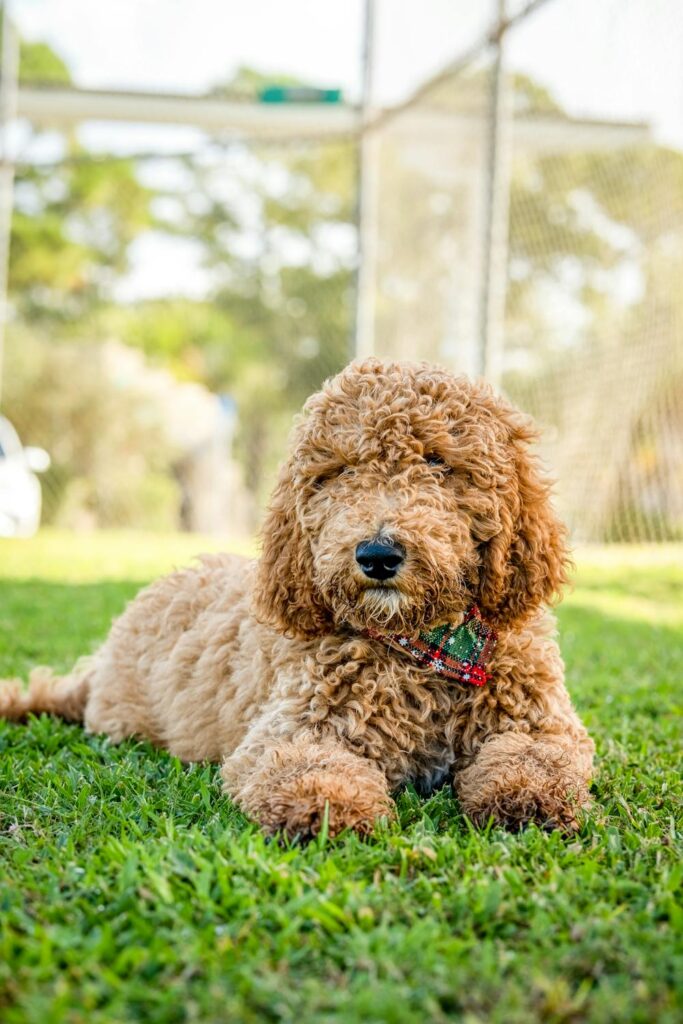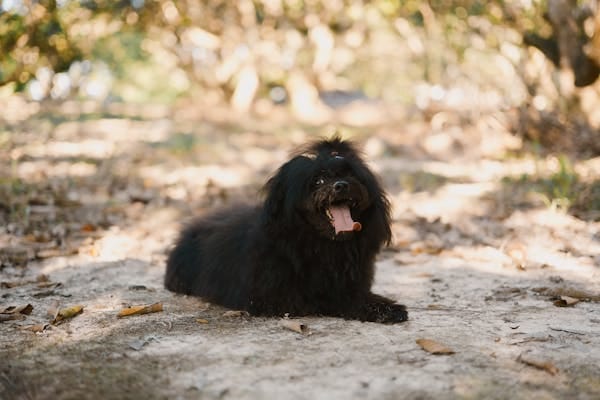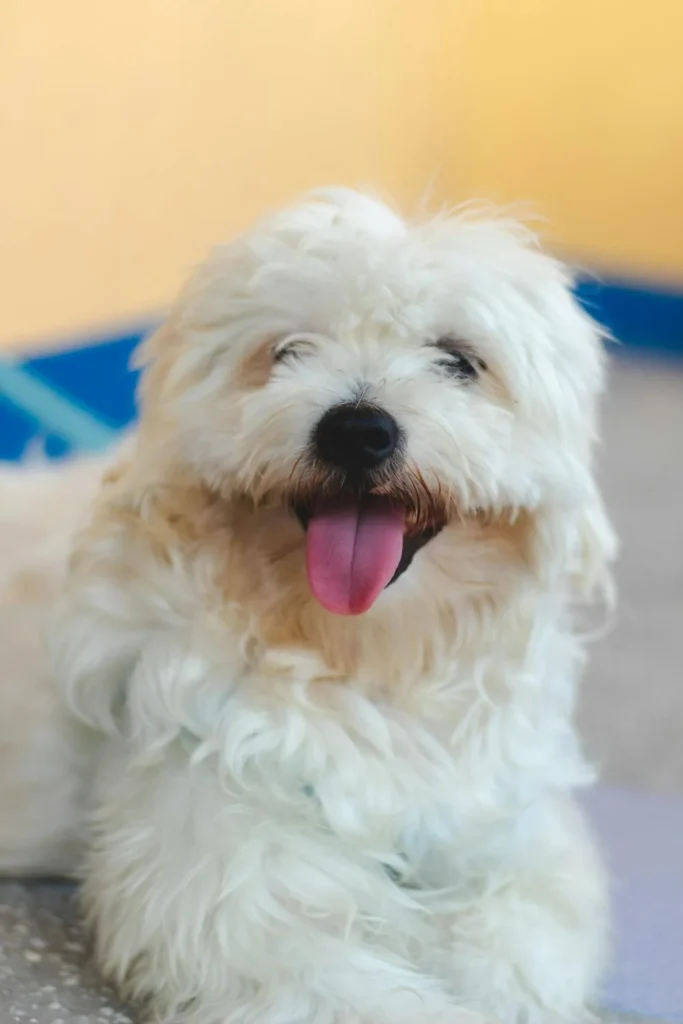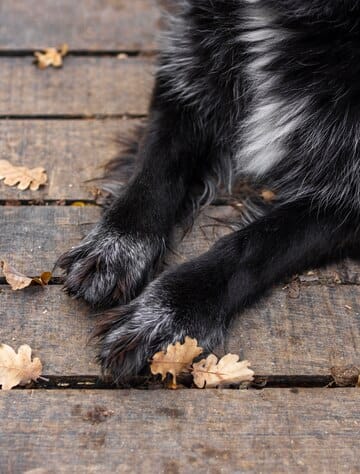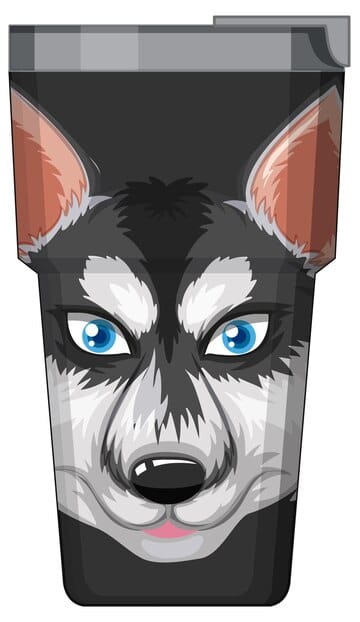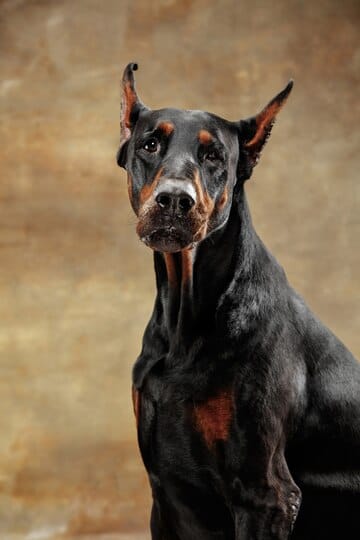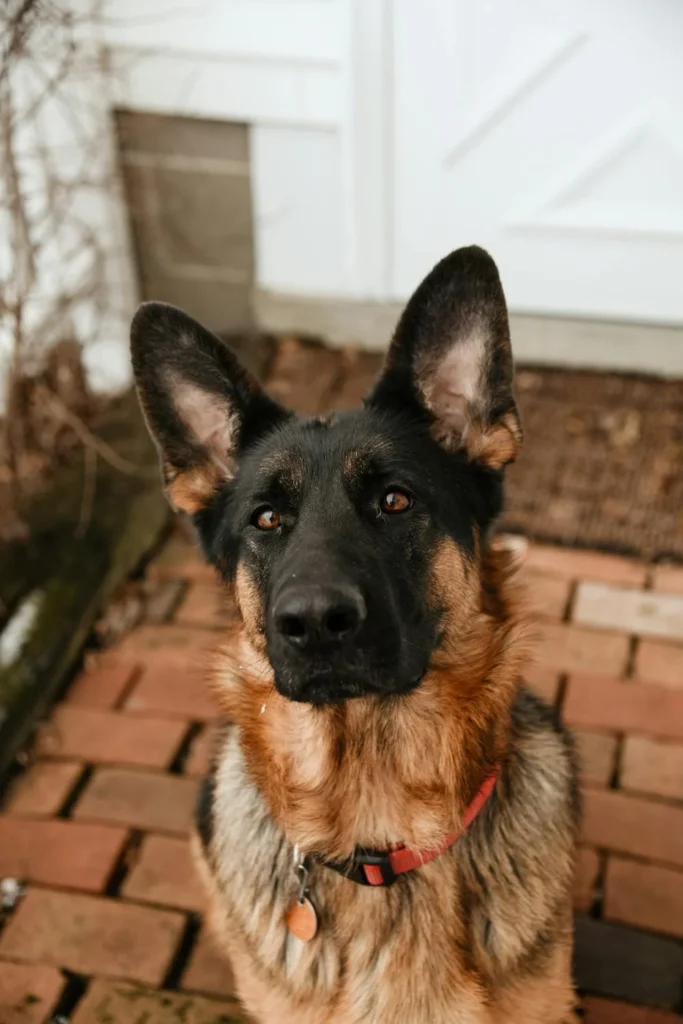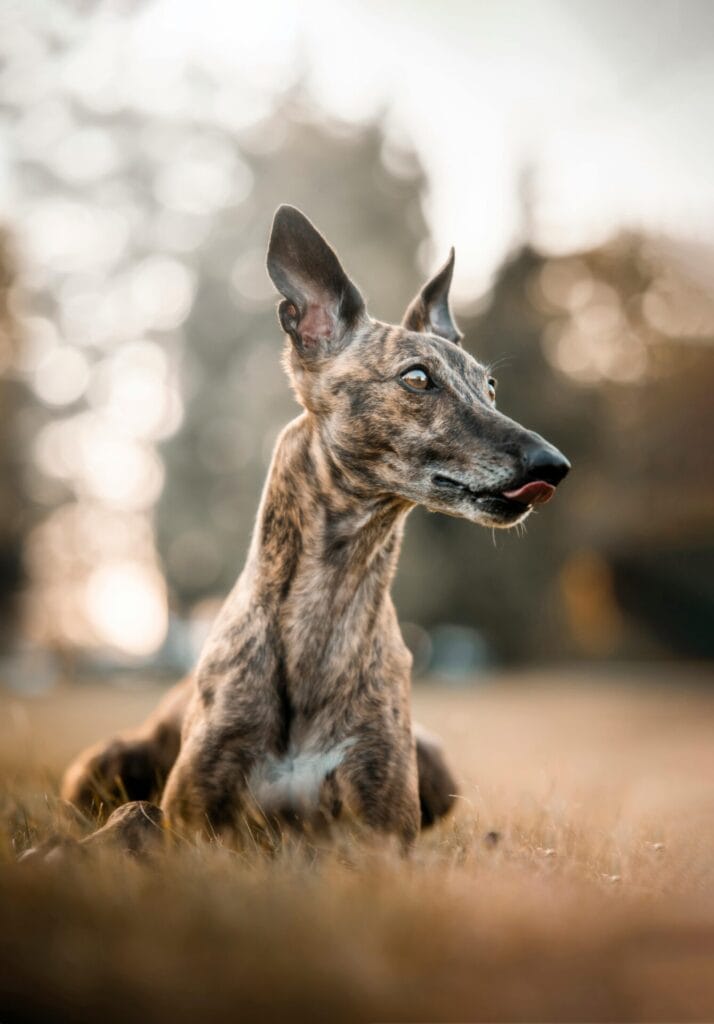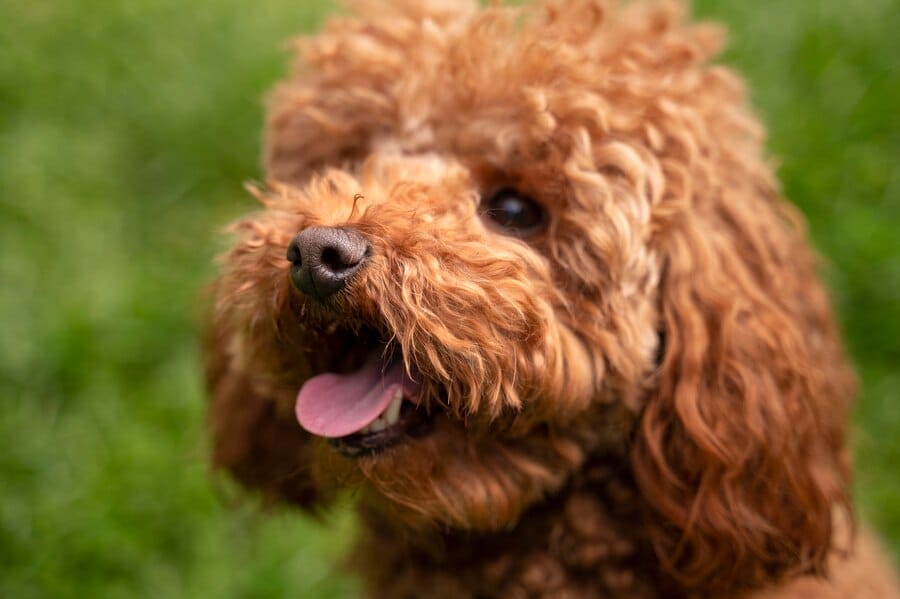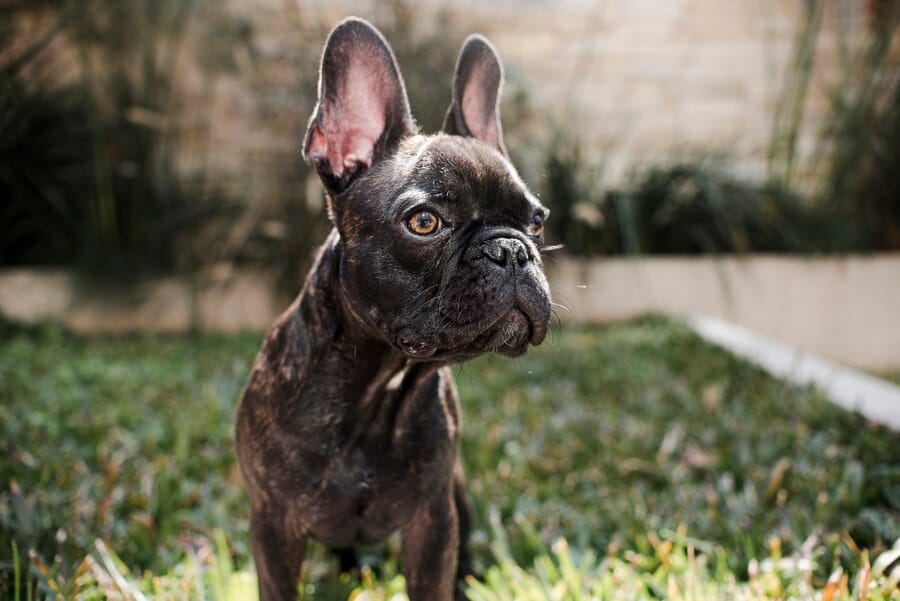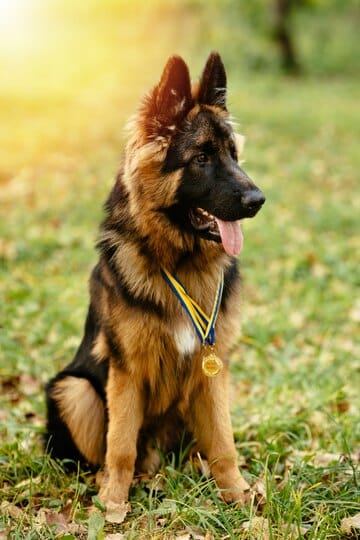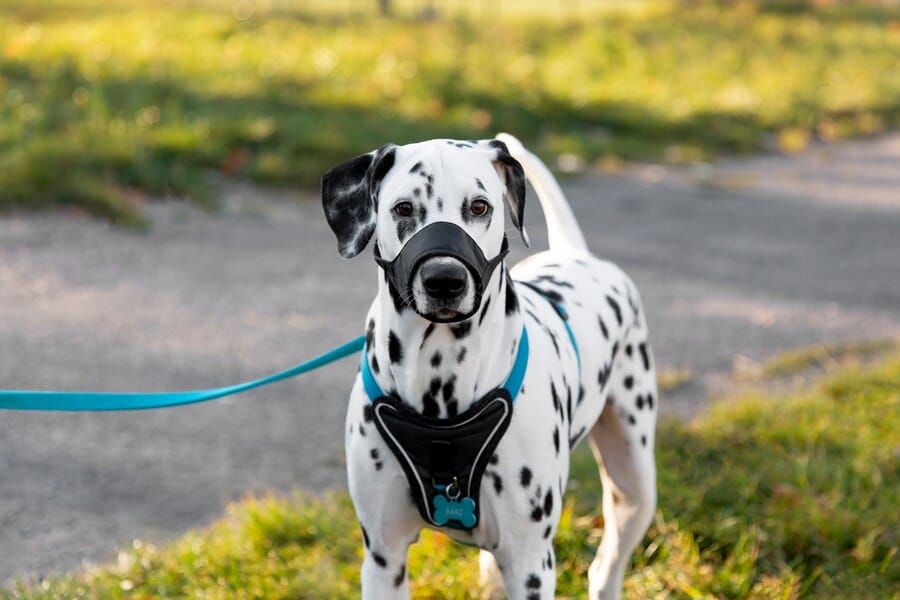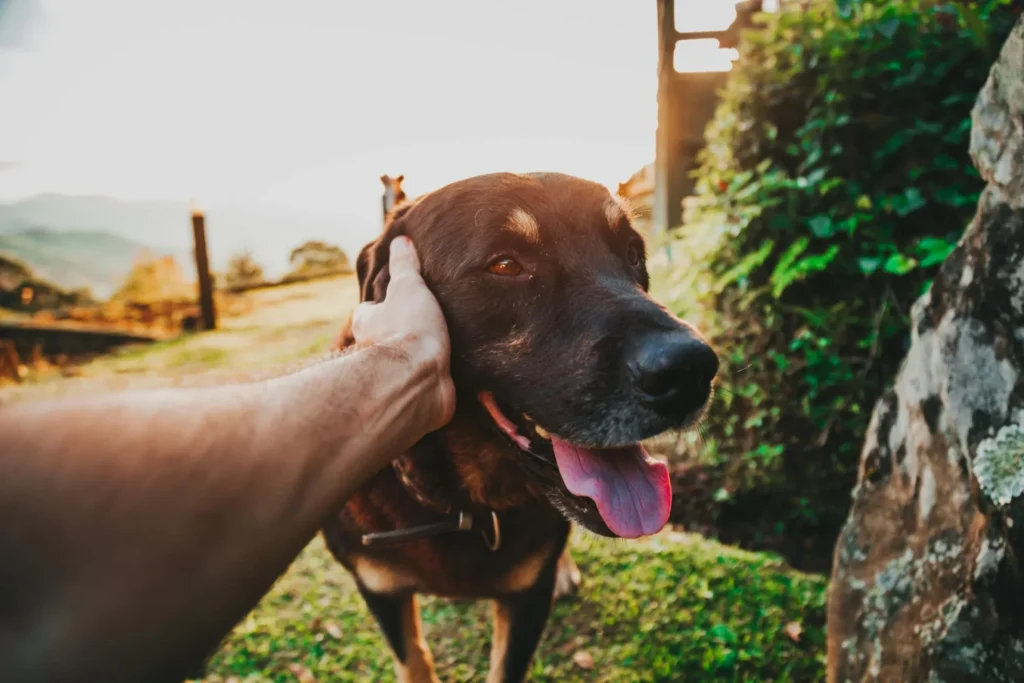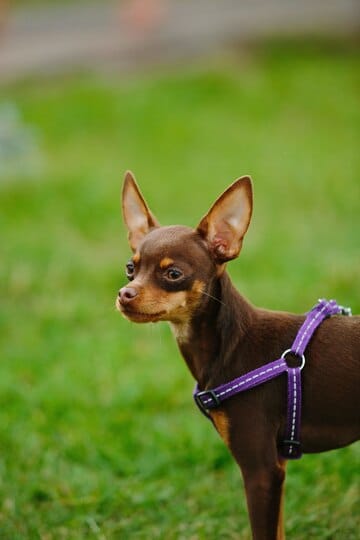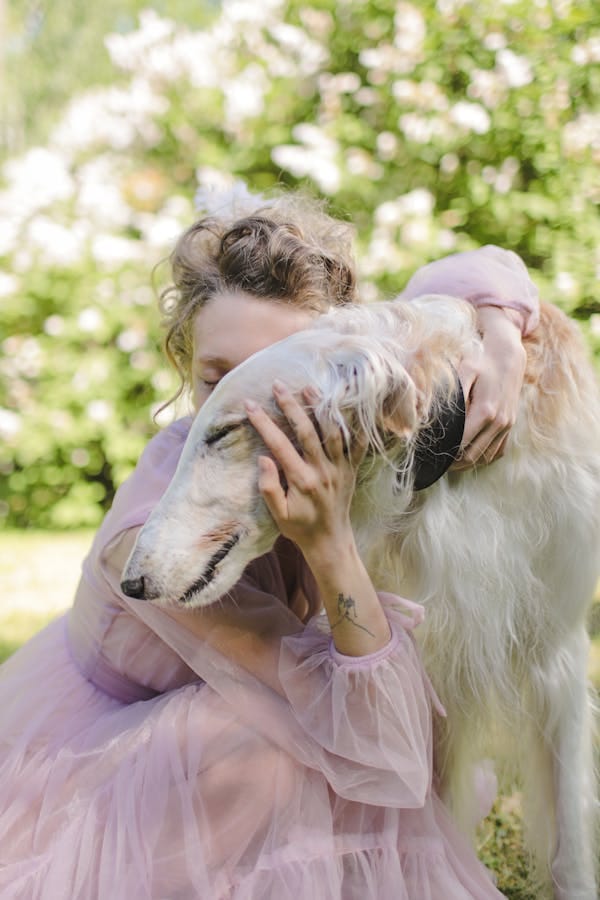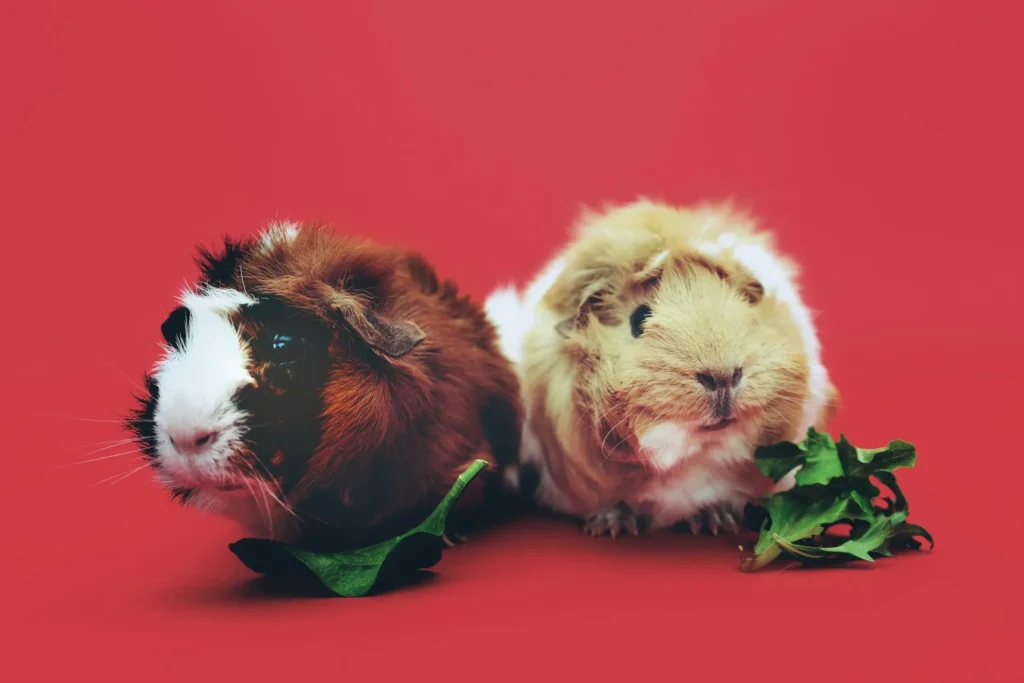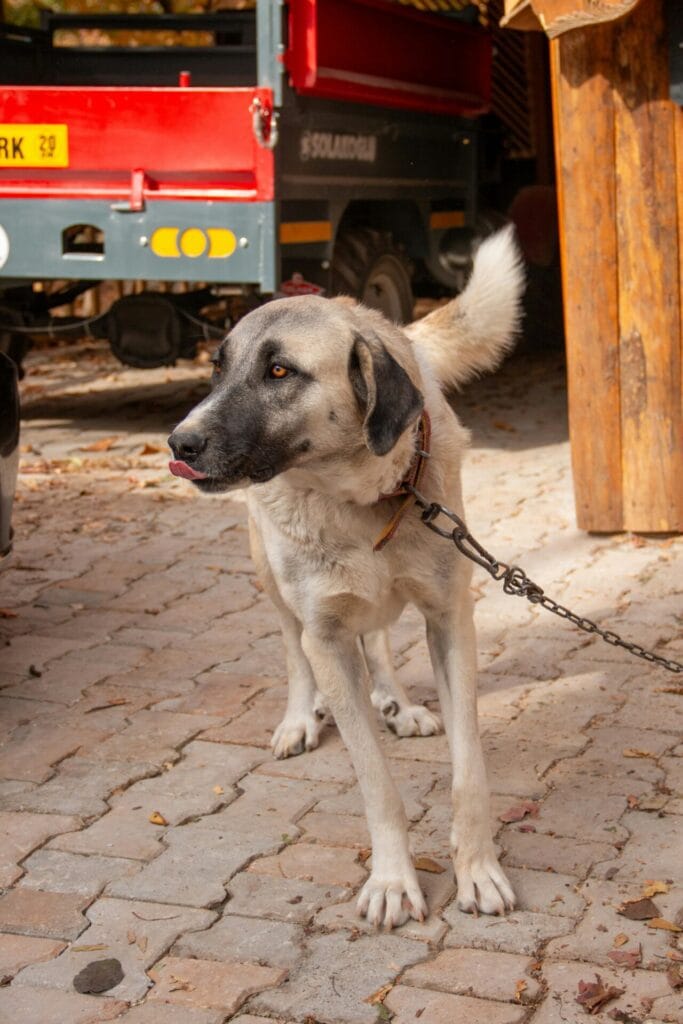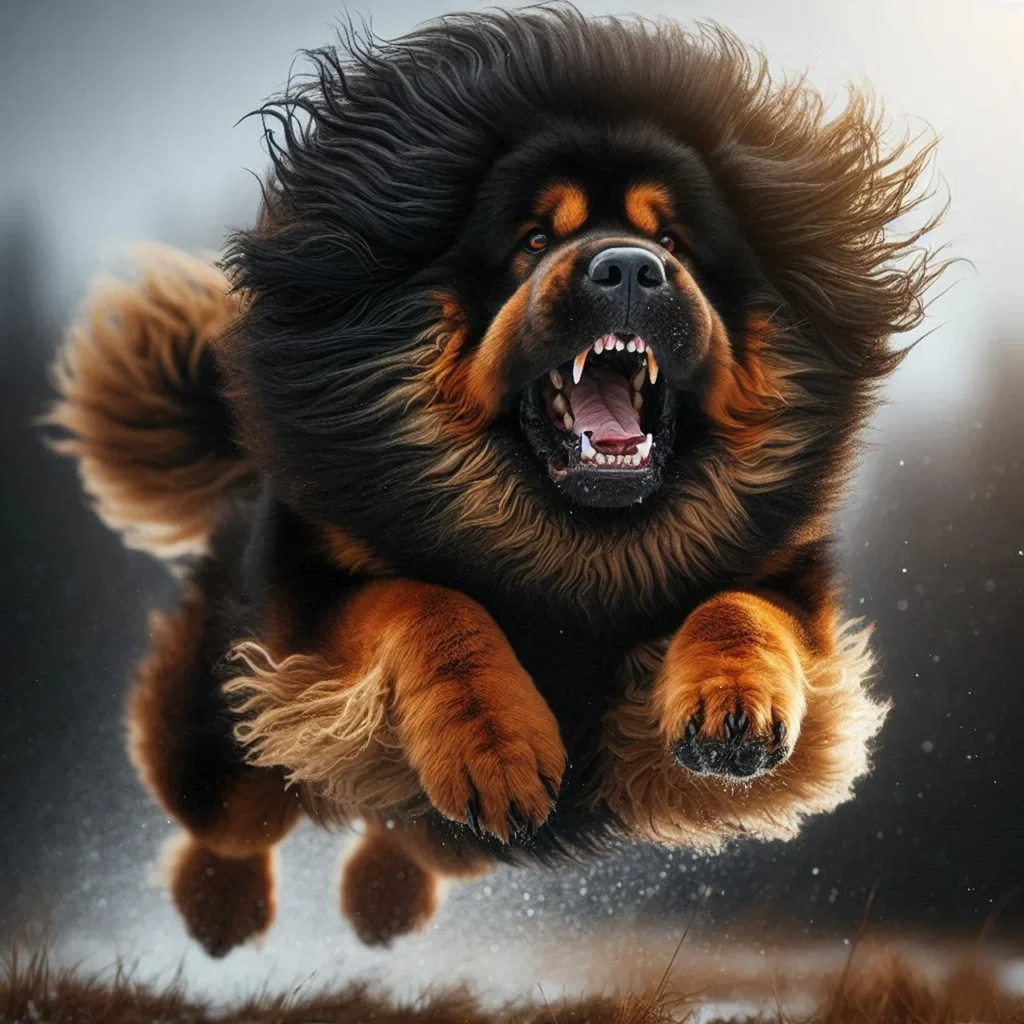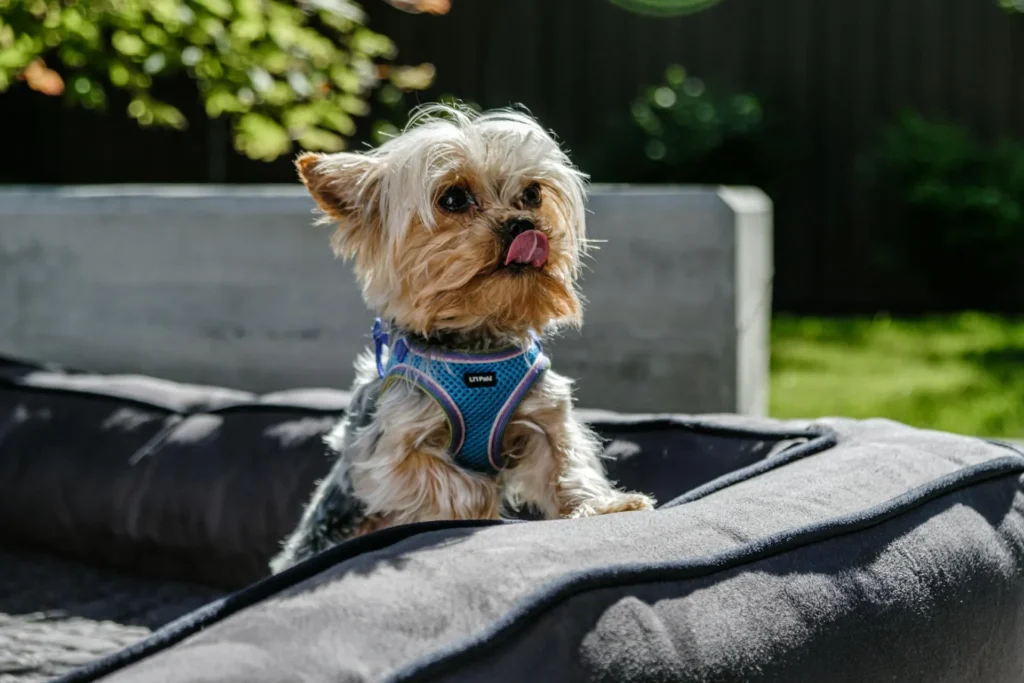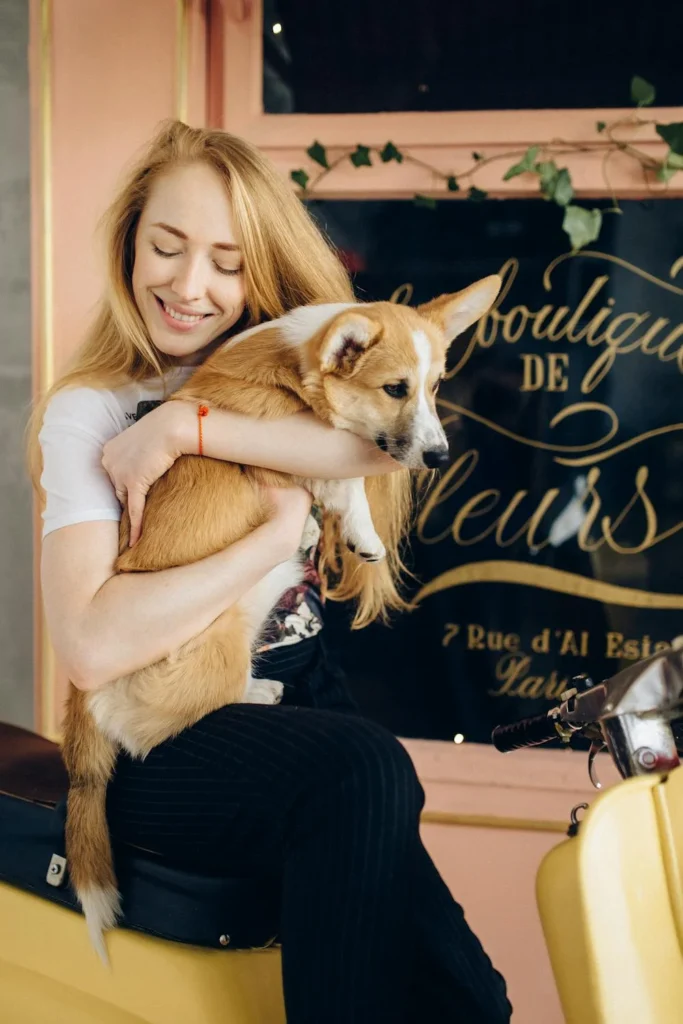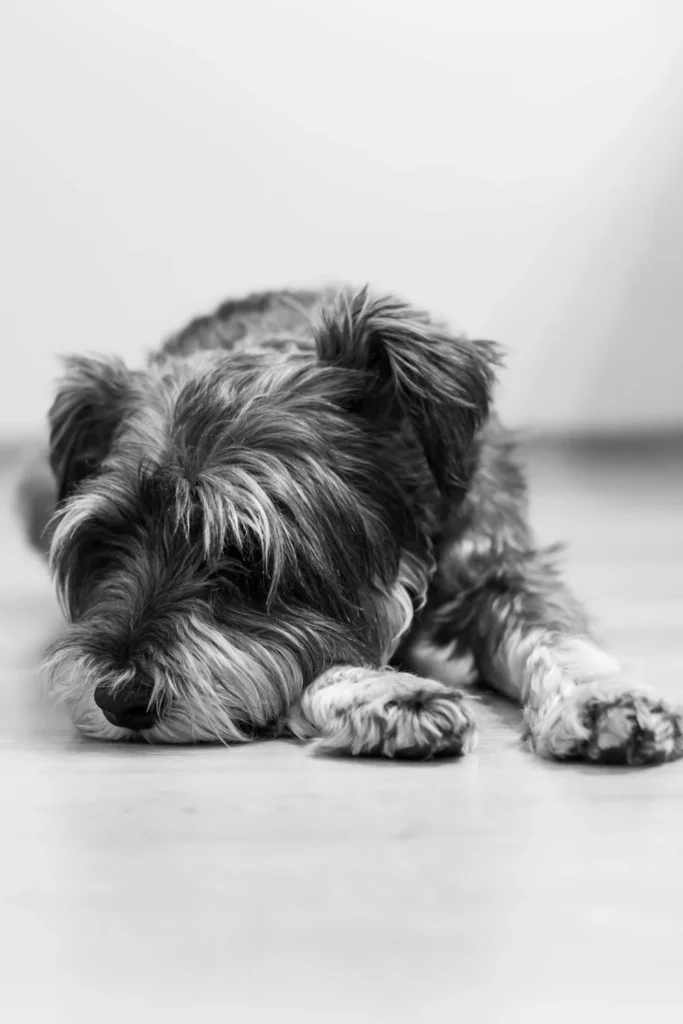- A Delightful Hybrid with an Irresistible Charm
- Origins and History of the Schnauzer poodle mix
- Breed Characteristics
- Caring for Your Schnoodle
- Grooming Routine and Coat Maintenance
- Exercise and Mental Stimulation: Keeping Your Schnoodle Happy and Healthy
- Training Tips: Unleashing Your Schnoodle’s Full Potential
- Nutrition and Feeding Guidelines: Fueling Your Schnoodle’s Active Lifestyle
- Suitability for First-Time Owners: Is the Schnoodle the Right Choice for You?
- Health Matters
- Pros and Cons of Owning a Schnoodle
- Who Is the Schnoodle Most Suitable For?
- Fun Facts and Trivia
- Getting a Schnoodle Puppy
- A Day in the Life of a Schnauzer Poodle mix owner
- Conclusion
- Frequently Asked Questions
- Are Schnoodles Hypoallergenic?
- Are Schnoodles Good Dogs?
- Are Schnoodles Smart?
- Are Schnoodles Aggressive?
- Are Schnoodles good with children?
- Are Schnoodles Easy To Train?
- How much exercise does a Schnoodle need?
- Do Schnoodles bark a lot?
- Are Schnoodles good apartment dogs?
- Are Schnoodles High Energy?
- Are Schnoodles Protective?
- Are Schnoodles Easy To Potty Train?
- Can Schnoodles Be Left Alone?
- Can Schnoodles Swim?
- Can Schnoodles Live With Cats?
- Can Schnoodles Run?
- Can Schnoodles Have Blue Eyes?
- Can Schnoodles Eat Peanut Butter?
- Are Schnoodles good dogs?
- Can Schnoodles Swim?
- Can Schnoodles Be Left Alone?
- Can Schnoodles Be AKC Registered?
- Can Schnoodles Live With Cats?
- Can Schnoodles Run?
- Can Schnoodles Have Blue Eyes?
- What Can Schnoodles Eat?
- What Do Schnoodles Look Like?
- What Do Schnoodle Puppies Look Like?
- What Do Schnoodles Need?
- How Long Do Schnoodles Live?
- How Big Do Schnoodles Get?
- How Much Do Schnoodles Cost?
- How Old Do Schnoodles Live?
- How Often Should Schnoodles Be Groomed?
- How Much Should Schnoodles Eat?
- How Often Should I Bathe My Schnoodle?
- How To Groom A Schnoodle At Home?
- Schnoodle Meaning
- Schnoodle What’s Good About ‘Em
A Delightful Hybrid with an Irresistible Charm
The Schnoodle poodle is a captivating crossbreed that combines the best of two beloved canine companions – the Schnauzer and the Poodle. This endearing hybrid has captured the hearts of dog lovers worldwide with its affectionate nature, spirited personality, and adorable appearance. Whether you’re seeking a loyal companion, an energetic playmate, or a furry friend with a touch of elegance, the Schnoodle promises to be a wonderful addition to any family.
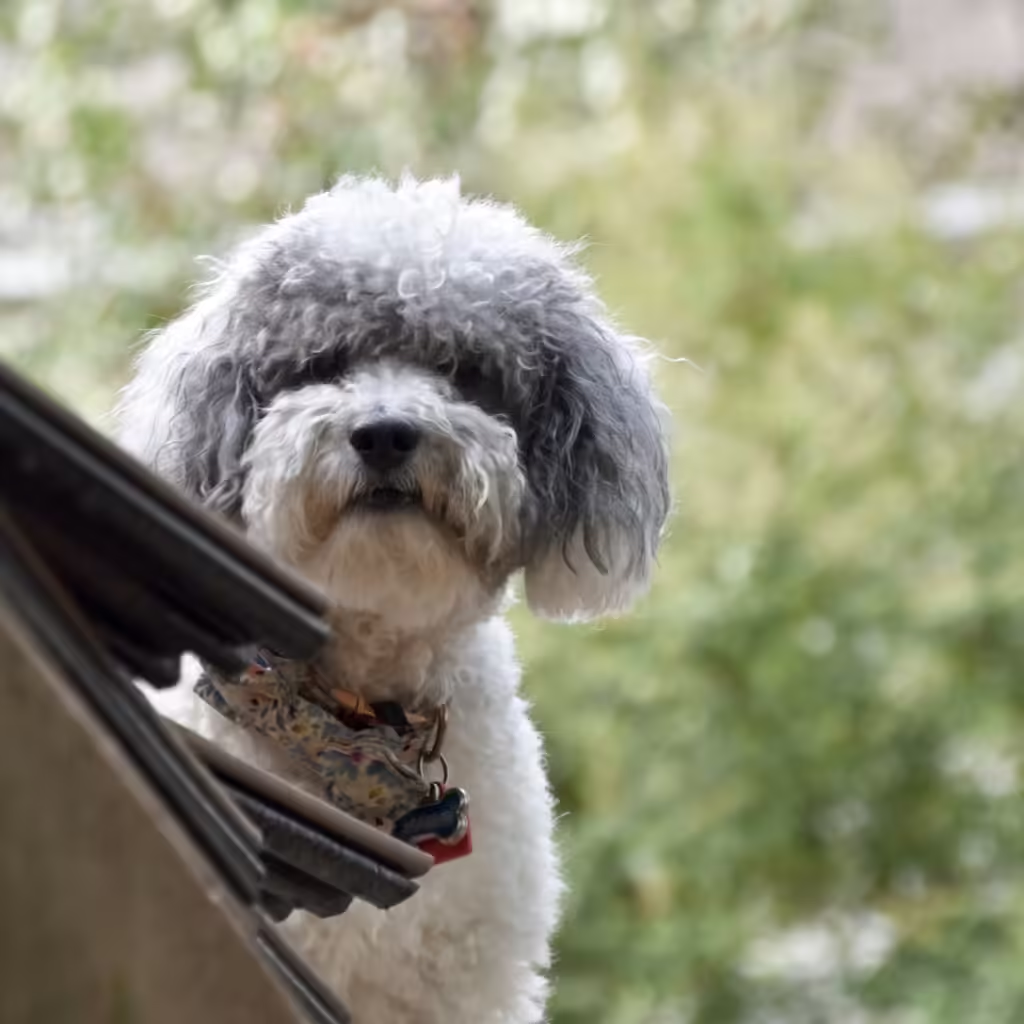
Breed Overview and Key Highlights
- A hybrid breed created by crossing the Schnauzer and the Poodle
- Comes in three size varieties: Toy, Miniature, and Standard
- Known for their hypoallergenic coats and minimal shedding
- Intelligent, affectionate, and highly trainable
- Versatile companions suitable for various living situations
- Require regular grooming and exercise to maintain their well-being
Origins and History of the Schnauzer poodle mix
Tracing the Roots: The Schnoodle’s Fascinating Backstory
The Schnoodle’s history is a captivating tale that spans centuries and continents. The breed’s origins can be traced back to the early 20th century when breeders sought to combine the best traits of the Schnauzer and the Poodle, creating a delightful hybrid that would become a beloved companion for many families.
The Schnauzer, with its roots dating back to Germany in the 15th century, was originally bred as a versatile farm dog, adept at guarding, herding, and even ratting. The Poodle, on the other hand, has a rich history that can be traced back to ancient civilizations, where it was highly regarded for its intelligence, loyalty, and elegant appearance.
By combining these two distinct breeds, breeders aimed to create a dog that would inherit the Schnauzer’s spirited personality and the Poodle’s hypoallergenic coat and intelligence. The result was a breed that quickly gained popularity for its endearing traits and adaptability to various living situations.
From Working Dog to Beloved Pet: The Evolution of the Schnoodle
While the Schnoodle’s ancestors were originally bred for practical purposes, such as herding, guarding, and hunting, the breed has evolved into a cherished companion animal. As families embraced the Schnoodle’s affectionate nature and versatility, the breed transitioned seamlessly from the role of a working dog to a beloved family pet.
Today, the Schnoodle’s popularity continues to soar, captivating dog lovers with its unique blend of traits and endearing personality. Whether residing in urban apartments or sprawling suburban homes, the Schnoodle has proven itself to be a loyal and adaptable companion, ready to bring joy and enrichment to the lives of its owners.
Breed Characteristics
Distinctive Traits of the Schnoodle
The Schnoodle is a breed that truly stands out from the crowd, with a unique combination of physical and personality traits that make it a delightful companion. From its endearing appearance to its spirited temperament, this hybrid breed offers a wealth of endearing qualities that are sure to capture your heart.
Quick Facts and Need-to-Know Points
- Size Variations: Toy (under 12 inches), Miniature (12-15 inches), and Standard (over 15 inches)
- Life Expectancy: 12-15 years on average
- Coat Type: Hypoallergenic, low to non-shedding
- Grooming Needs: Regular brushing and professional grooming every 6-8 weeks
- Exercise Requirements: Moderate, daily walks and playtime
- Temperament: Affectionate, intelligent, energetic, and eager to please
- Family-Friendly: Excellent with children and suitable for various living situations
Appearance
The Look of Elegance: Unraveling the Schnoodle’s Unique Appearance
The Schnoodle is a breed that exudes a charming and distinctive appearance, combining the best traits of its parent breeds – the Schnauzer and the Poodle. With its endearing features and lovable expressions, this hybrid is sure to capture the hearts of all who cross its path.
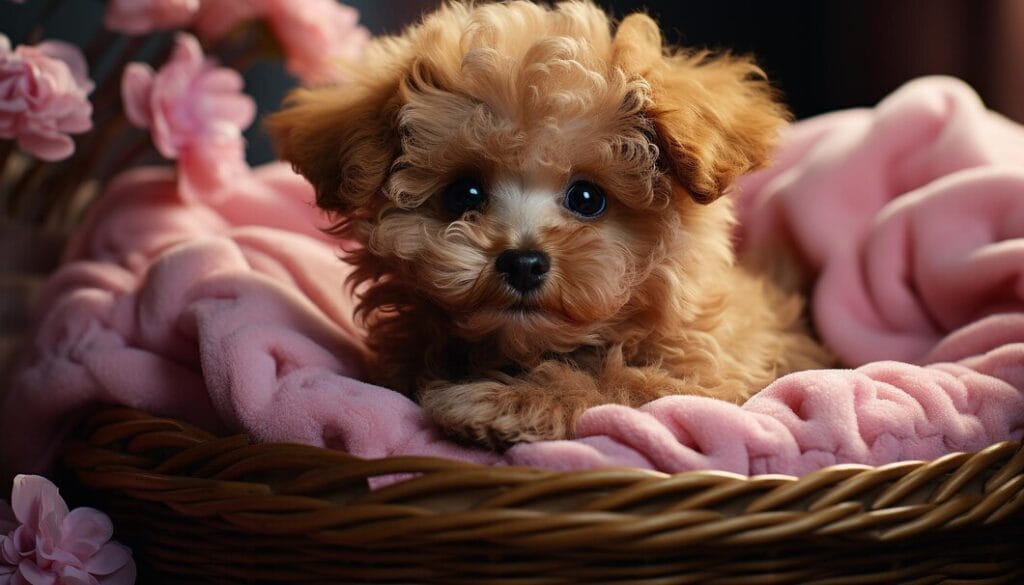
Physical Characteristics and Size Variations
The Schnoodle comes in three size variations, each with its own unique charm:
- Toy Schnoodle: Standing at a maximum height of 12 inches, the Toy Schnoodle is the smallest of the three varieties. These petite pups are known for their adorable features and compact size, making them ideal companions for apartment living or those with limited space.
- Miniature Schnoodle: The Miniature Schnoodle is the mid-sized version, typically ranging from 12 to 15 inches in height. This size offers the perfect balance between portability and sturdiness, making it a popular choice for families seeking a manageable yet energetic companion.
- Standard Schnoodle: As the largest of the three varieties, the Standard Schnoodle stands over 15 inches tall. Despite their larger stature, these pups maintain a gentle and affectionate demeanor, often making them excellent companions for active families or those with ample living space.
Regardless of size, all Schnoodles share a distinctive appearance characterized by a rounded head, floppy ears, and a sturdy yet agile build. Their expressive eyes and endearing expressions are sure to melt the hearts of even the most discerning dog lovers.
A Coat Like No Other: Exploring Coat Types and Colors
One of the Schnoodle’s most remarkable features is its hypoallergenic coat, which is often described as soft, plush, and incredibly low-shedding. The breed’s coat can range from tightly curled to loosely wavy, with a variety of colors and patterns to choose from.
Some of the most common coat colors found in Schnoodles include:
- Black
- White
- Cream
- Apricot
- Silver
- Parti-color (a combination of two or more colors)
The Schnoodle’s coat can also vary in texture, with some pups inheriting the wiry coat of the Schnauzer, while others sport the fine, curly locks of the Poodle. Regardless of the coat type, one thing is certain – the Schnoodle’s coat is a true masterpiece, requiring regular grooming to maintain its beauty and health.
Grooming Needs: Keeping Your Schnoodle Looking Their Best
Proper grooming is essential for maintaining the Schnoodle’s stunning appearance and ensuring their overall well-being. While their coats are relatively low-shedding, they do require regular brushing and professional grooming every 6-8 weeks to prevent matting and keep their coat looking its best.
In addition to regular brushing and grooming, it’s important to keep your Schnoodle’s nails trimmed and their ears clean to prevent any potential health issues. With the right grooming routine and attention to detail, your Schnoodle will not only look their best but will also enjoy a happy and healthy life by your side.
Temperament
The Delightful Personality of the Schnoodle
One of the most endearing traits of the Schnoodle is its delightful personality. These affectionate and intelligent pups are known for their unwavering loyalty, boundless energy, and an eager-to-please attitude that makes them a joy to have around.
From their playful antics to their gentle and loving nature, Schnoodles have a way of capturing the hearts of their owners and becoming cherished members of the family. Whether you’re seeking a constant companion or an energetic playmate, the Schnoodle promises to bring an abundance of joy and laughter into your life.
Energy Levels and Exercise Needs
While the Schnoodle’s energy levels can vary depending on their size and age, these spirited pups generally have a moderate to high energy level. Daily exercise and playtime are essential for maintaining their physical and mental well-being, as well as preventing any destructive behaviors that may arise from pent-up energy.
Regular walks, runs, or trips to the dog park are excellent ways to keep your Schnoodle active and engaged. Additionally, providing them with interactive toys and puzzles can help stimulate their minds and satisfy their natural curiosity.
Socialization and Training: Unlocking Your Schnoodle’s Full Potential
Thanks to their intelligence and eagerness to please, Schnoodles are highly trainable and respond well to positive reinforcement training methods. Early socialization and obedience training are crucial for shaping their behavior and ensuring they grow into well-mannered and confident companions.
Introducing your Schnoodle to a variety of people, animals, and environments from a young age can help them develop into well-adjusted dogs.
Living Needs
The Perfect Companion: Is the Schnoodle Right for Your Lifestyle?
Before welcoming a Schnoodle into your home, it’s essential to consider whether this breed aligns with your lifestyle and living situation. These lovable companions can adapt to various environments, making them suitable for a range of living conditions, from apartments to spacious homes with yards.
Exercise Requirements: Keeping Your Schnoodle Active and Engaged
Schnoodles are energetic dogs that require regular exercise to maintain their physical and mental well-being. Depending on their size and age, they may require anywhere from 30 minutes to an hour of daily exercise, which can include walks, runs, playtime in the yard, or visits to the dog park.
It’s crucial to provide your Schnoodle with ample opportunities for physical activity and mental stimulation to prevent boredom and destructive behaviors. Interactive toys, puzzle feeders, and engaging games can also help keep their minds sharp and engaged.
Apartment-Friendly or Countryside Dweller? Exploring Suitable Living Conditions
One of the Schnoodle’s most appealing traits is its versatility when it comes to living conditions. With proper exercise and attention, these adaptable pups can thrive in both urban and suburban environments.
For apartment dwellers, the smaller Toy and Miniature Schnoodles may be the most suitable options, as their compact size and moderate exercise needs make them well-suited for city living. Regular walks, playtime in the park, and mental stimulation can help keep them happy and content in smaller spaces.
On the other hand, the larger Standard Schnoodle may be better suited for households with access to a yard or open spaces, where they can unleash their playful energy and enjoy plenty of room to run and explore.
Regardless of your living situation, it’s essential to ensure that your Schnoodle receives adequate exercise, socialization, and mental stimulation to prevent any behavioral issues and promote their overall well-being.
Companionship and Separation Anxiety: Understanding Your Schnoodle’s Needs
Schnoodles are affectionate and loyal companions that thrive on human interaction and companionship. They form strong bonds with their families and may experience separation anxiety if left alone for extended periods.
It’s crucial to consider your lifestyle and daily routine when bringing a Schnoodle into your home. If you work long hours or travel frequently, it may be best to explore options such as doggie daycare, hiring a pet sitter, or arranging for a family member or friend to check in on your furry friend regularly.
With proper preparation and attention to their needs, Schnoodles can adapt to various living situations and make wonderful companions for individuals or families seeking a loving and energetic addition to their household.
Group
The Schnoodle’s Kennel Club Group Classification
As a hybrid breed, the Schnoodle does not have an official classification by major kennel clubs like the American Kennel Club (AKC) or the United Kennel Club (UKC). However, their parent breeds, the Schnauzer and the Poodle, are recognized and classified within specific groups by these organizations.
The Schnauzer falls under the Terrier Group, while the Poodle is classified as a member of the Non-Sporting Group. While the Schnoodle may share some characteristics with these groups, its hybrid nature means that it does not officially belong to any specific group.
Despite the lack of official recognition by major kennel clubs, the Schnoodle has gained widespread popularity and acceptance among dog enthusiasts and organizations dedicated to hybrid breeds. Many hybrid dog clubs and breed-specific organizations have emerged to celebrate and promote the unique traits and qualities of crossbreeds like the Schnoodle.
Activity Level
From Couch Potato to Energetic Dynamo: The Schnoodle’s Activity Spectrum
The Schnoodle’s activity level can vary depending on several factors, including age, size, and individual temperament. While some Schnoodles may be content lounging on the couch for extended periods, others may be true dynamos, constantly seeking out new adventures and activities.
In general, Schnoodles are known for their moderate to high energy levels, especially during their puppy and adolescent years. Regular exercise and playtime are essential for keeping these spirited pups physically and mentally stimulated.
Toy and Miniature Schnoodles may have slightly lower exercise needs compared to their larger Standard counterparts, but all sizes require daily walks, games of fetch, and opportunities to burn off excess energy.
It’s important to note that even the most energetic Schnoodle will appreciate some downtime and snuggle sessions with their beloved owners. By providing a balanced routine of exercise and rest, you can ensure that your Schnoodle remains happy, healthy, and well-adjusted.
Barking Level
The Silent Sentinel or Vocal Vigilante: Understanding Your Schnoodle’s Barking Tendencies
While Schnoodles are generally not considered excessive barkers, their barking tendencies can vary depending on their individual temperament and training. Some Schnoodles may be relatively quiet, only barking when necessary, while others may be more vocal, alerting their owners to potential threats or simply seeking attention.
It’s essential to understand that barking is a natural behavior for dogs and can serve various purposes, such as alerting, playing, or expressing excitement or anxiety. However, excessive barking can become a nuisance and may need to be addressed through proper training and management.
Early socialization and obedience training can help curb excessive barking tendencies and teach your Schnoodle when it’s appropriate to vocalize. Additionally, providing your furry friend with ample exercise, mental stimulation, and attention can help prevent boredom-induced barking.
With patience and consistency, it’s possible to strike a balance between allowing your Schnoodle to express themselves and maintaining a peaceful living environment for you and your neighbors.
Characteristics
The Schnoodle’s Unique Quirks and Endearing Traits
Beyond their physical appearance and temperament, Schnoodles possess a variety of unique characteristics and quirks that make them truly endearing companions. From their playful antics to their affectionate nature, these hybrid pups are sure to steal your heart and bring endless joy to your daily life.
One of the most charming traits of the Schnoodle is their unwavering loyalty and devotion to their owners. These affectionate pups form strong bonds with their families and thrive on human companionship, often following their beloved owners from room to room, eager to be included in every activity.
Schnoodles are also known for their intelligence and eagerness to learn, making them highly trainable and receptive to various commands and tricks. Their playful personalities and boundless energy make them delightful playmates for children and adults alike, ensuring countless hours of fun and laughter.
Additionally, Schnoodles are often described as having a gentle and loving nature, making them excellent companions for families with young children or elderly individuals. Their affectionate demeanor and calm temperament create a sense of comfort and security, cementing their place as cherished members of the household.
Coat Type
Fur-tastic Coats: Exploring the Schnoodle’s Coat Varieties
One of the most remarkable features of the Schnoodle is their stunning coat, which can range from tightly curled to loosely wavy, with a variety of colors and patterns to choose from. The breed’s coat is often described as hypoallergenic, making it an excellent choice for individuals with allergies or sensitivities to pet dander.
The Schnoodle’s coat can exhibit a range of textures, from the wiry coat of the Schnauzer to the fine, curly locks of the Poodle. Some Schnoodles may inherit a combination of these coat types, resulting in a unique and visually striking appearance.
Regardless of the coat type, Schnoodles are known for their low-shedding tendencies, making them an ideal companion for those who prefer a cleaner living environment. However, it’s important to note that regular grooming and brushing are essential to maintain the health and appearance of their coats, and to prevent matting or tangles.
Shedding
Minimal Mess or Fur-nado? The Schnoodle’s Shedding Habits
One of the most appealing aspects of the Schnoodle breed is their low-shedding to non-shedding coats, making them an excellent choice for those who prefer a cleaner living environment or suffer from allergies to pet dander.
Unlike many other dog breeds, Schnoodles do not experience seasonal shedding or excessive hair loss. Their hypoallergenic coats minimize the amount of dander and loose hair that accumulates in the home, reducing the need for constant vacuuming and cleaning.
However, it’s important to note that while Schnoodles are considered low-shedding or non-shedding, they are not completely shed-free. Some minimal shedding may occur, especially during grooming sessions or when the coat is being brushed or combed.
Trainability
Unleashing the Potential: The Schnoodle’s Trainability and Intelligence
One of the most remarkable traits of the Schnoodle is their exceptional trainability and intelligence, which stem from their Poodle lineage. These intelligent and eager-to-please pups have a natural aptitude for learning and responding to positive reinforcement training methods.
Schnoodles are known for their quick wit and ability to pick up on commands and tricks with ease. Their attentiveness and desire to please their owners make them excellent students, ready to learn and showcase their skills.
Early socialization and obedience training are crucial for shaping the Schnoodle’s behavior and ensuring they grow into well-mannered and confident companions. Positive reinforcement techniques, such as using treats, praise, and play, can help reinforce desirable behaviors and create a strong bond between you and your furry friend.
In addition to basic obedience training, Schnoodles excel in various canine sports and activities, such as agility, obedience competitions, and even therapy work. Their intelligence and versatility make them adaptable to various training environments and challenges, allowing them to showcase their talents and create lasting memories with their owners.
Caring for Your Schnoodle
Grooming Routine and Coat Maintenance

Maintaining the Schnoodle’s beautiful coat requires a consistent grooming routine to keep it looking its best and prevent matting or tangles. While their low-shedding coats minimize the amount of loose hair in the home, regular brushing and professional grooming are still essential.
It’s recommended to brush your Schnoodle’s coat at least once a week, using a slicker brush or a soft-bristle brush to remove any loose hair and prevent matting. During periods of heavy shedding or when the coat becomes particularly thick, more frequent brushing may be necessary.
In addition to regular brushing, most Schnoodles will need professional grooming every 6-8 weeks. This includes a thorough trimming and shaping of the coat, as well as bathing, ear cleaning, and nail trimming. Professional groomers have the expertise and tools to keep your Schnoodle’s coat in pristine condition and address any potential issues, such as matting or skin irritations.
It’s important to establish a grooming routine from an early age to help your Schnoodle become accustomed to the process and make it a positive experience. Positive reinforcement, such as treats and praise, can go a long way in making grooming sessions enjoyable for both you and your furry friend.
Exercise and Mental Stimulation: Keeping Your Schnoodle Happy and Healthy
Schnoodles are active and energetic dogs that require regular exercise and mental stimulation to maintain their physical and emotional well-being. Providing your Schnoodle with ample opportunities for physical activity and mental enrichment can help prevent boredom, destructive behaviors, and potential health issues.
Exercise Requirements:
- Daily walks or runs, ranging from 30 minutes to an hour, depending on your Schnoodle’s size and energy level
- Playtime in a securely fenced yard or dog park, allowing them to run, chase, and explore
- Interactive games, such as fetch or tug-of-war, to engage their minds and bodies
Mental Stimulation:
- Puzzle toys and treat dispensers that challenge their problem-solving skills
- Obedience training and learning new tricks to keep their minds sharp
- Nose work or scent games that tap into their natural hunting instincts
- Rotating toys and introducing new ones to prevent boredom
It’s crucial to adapt your Schnoodle’s exercise and mental stimulation routine to their individual needs and preferences. Some Schnoodles may thrive on high-intensity activities, while others may prefer a more relaxed approach. Monitoring their energy levels and adjusting the routine accordingly can ensure a balanced and fulfilling lifestyle for your furry companion.
Training Tips: Unleashing Your Schnoodle’s Full Potential
Schnoodles are highly intelligent and eager to please, making them excellent candidates for training. With the right approach and consistent effort, you can unleash your Schnoodle’s full potential and cultivate a well-mannered, obedient, and confident companion.
- Start Early: Socialization and basic obedience training should begin as early as possible, preferably during the puppy stage. Early training lays the foundation for positive behaviors and helps prevent the development of unwanted habits.
- Use Positive Reinforcement: Schnoodles respond best to positive reinforcement techniques, such as treating, praising, and rewarding desired behaviors. Avoid punishment or harsh methods, as they can lead to fear and mistrust.
- Keep Training Sessions Short and Fun: Schnoodles have a relatively short attention span, especially as puppies. Keep training sessions brief (5-10 minutes) and engaging, incorporating play and treats to make the experience enjoyable.
- Consistency is Key: Consistency in commands, rewards, and routines is crucial for effective training. Ensure that all family members are on the same page and reinforce the same rules and expectations.
- Socialize Early and Often: Proper socialization is essential for Schnoodles to develop into well-adjusted and confident dogs. Expose them to various sights, sounds, people, and environments in a positive and controlled manner.
- Use Rewards They Value: Schnoodles respond well to treats, praise, and playtime as rewards. Find out what motivates your furry friend the most and use it to reinforce desired behaviors.
- Be Patient and Persistent: Training a Schnoodle requires patience and consistency. Celebrate small victories and don’t get discouraged by setbacks. With time and persistent effort, you’ll see remarkable progress and a well-trained companion.
Remember, training is not just about teaching commands; it’s also an opportunity to strengthen the bond between you and your Schnoodle. Approach each session with patience, positivity, and a sense of fun, and you’ll be rewarded with a loyal, well-behaved, and cherished furry friend.
Nutrition and Feeding Guidelines: Fueling Your Schnoodle’s Active Lifestyle
Proper nutrition is essential for maintaining your Schnoodle’s health, energy levels, and overall well-being. These active and energetic dogs require a balanced diet that provides the necessary nutrients to support their growth, development, and active lifestyle.
When it comes to feeding your Schnoodle, it’s important to consider their age, size, and activity level. Puppies have different nutritional needs than adults, and more active dogs may require a higher caloric intake compared to their more sedentary counterparts.
High-quality dog food formulated specifically for your Schnoodle’s life stage and size is recommended. Look for foods that contain high-quality proteins, healthy fats, and a balanced ratio of carbohydrates, vitamins, and minerals.
Here are some general feeding guidelines for Schnoodles:
- Puppies (up to 1 year old): Feed 3-4 small meals per day, adjusting the amount based on your puppy’s growth rate and activity level.
- Adults (1-7 years old): Feed 2 meals per day, following the recommended portion sizes on the dog food package or consulting with your veterinarian.
- Seniors (7+ years old): Adjust the portion sizes and consider a senior-specific formula tailored to their lower energy requirements and potential health needs.
It’s essential to monitor your Schnoodle’s body condition and make adjustments to their diet as needed. Overfeeding can lead to obesity, while underfeeding can result in nutrient deficiencies and health problems.
Additionally, provide fresh, clean water at all times, and consider incorporating healthy treats and supplements as recommended by your veterinarian to ensure a well-rounded and balanced diet for your active Schnoodle companion.
Suitability for First-Time Owners: Is the Schnoodle the Right Choice for You?
Schnoodles can make excellent companions for first-time dog owners, provided their needs and requirements are taken into consideration. These affectionate and intelligent hybrids offer a unique blend of traits that can make them a suitable choice for those new to dog ownership.
One of the most appealing aspects of the Schnoodle for first-time owners is their generally friendly and adaptable nature. These dogs are known for their eagerness to please and their ability to form strong bonds with their families, making them excellent companions for those willing to invest time and effort into training and socialization.
However, it’s important to note that Schnoodles are active and energetic dogs that require regular exercise and mental stimulation. First-time owners should be prepared to provide their Schnoodle with daily walks, playtime, and interactive toys to keep them physically and mentally engaged.
Grooming requirements can also be a consideration for first-time owners. While Schnoodles are generally low-shedding, they do require regular brushing and professional grooming every 6-8 weeks to maintain their coats and prevent matting.
Health Matters
Average Lifespan: How Long Can You Expect Your Schnoodle to Live?
Schnoodles are generally considered a healthy and long-living breed, with an average lifespan ranging from 12 to 15 years. However, it’s important to note that several factors can influence a dog’s longevity, including genetics, diet, exercise, and overall care.
Proper nutrition, regular veterinary check-ups, and a healthy lifestyle can contribute significantly to extending your Schnoodle’s life expectancy. Additionally, maintaining an ideal weight and providing ample opportunities for physical activity and mental stimulation can help prevent obesity-related health issues and keep your furry friend in top shape.
It’s worth noting that smaller Schnoodles, such as the Toy and Miniature varieties, may have a slightly longer lifespan compared to their larger Standard counterparts. This is a common trend observed in many dog breeds, as smaller dogs tend to have a slower metabolic rate and experience less stress on their joints and organs.
Ultimately, with responsible ownership, a loving home, and a commitment to providing the best possible care, your Schnoodle can enjoy a long, happy, and fulfilling life as a cherished member of your family.
Potential Health Issues: What to Watch Out For
While Schnoodles are generally considered a healthy breed, it’s essential to be aware of potential health issues that may affect them. Early detection and preventive measures can go a long way in ensuring your furry friend’s well-being and addressing any concerns promptly.
Here are some common health issues to watch out for in Schnoodles:
- Hip and Elbow Dysplasia: These inherited conditions can cause joint pain, lameness, and arthritis in dogs. Schnoodles, especially larger varieties, can be prone to these issues, so it’s crucial to obtain hip and elbow clearances from reputable breeders.
- Eye Problems: Schnoodles may be susceptible to various eye conditions, such as progressive retinal atrophy (PRA), cataracts, and dry eye (keratoconjunctivitis sicca). Regular eye examinations by a veterinary ophthalmologist can help detect and manage these issues early on.
- Ear Infections: Due to their floppy ears, Schnoodles can be prone to ear infections, especially if their ears are not cleaned and maintained properly. Regular ear checks and proper grooming can help prevent these infections.
- Allergies: Like their Poodle parent, Schnoodles may be susceptible to various allergies, including food allergies, environmental allergies, and skin allergies. Identifying and managing allergens is essential for your pet’s comfort and well-being.
- Dental Issues: Schnoodles can be prone to dental problems, such as tartar buildup, gum disease, and tooth decay. Regular dental check-ups, brushing, and professional cleanings can help maintain good oral health.
It’s important to work closely with your veterinarian to develop a comprehensive preventive care plan for your Schnoodle. Regular check-ups, appropriate vaccinations, and routine screenings can help identify potential health issues early and ensure your furry friend receives the necessary treatment and care.
The Importance of Health Clearances from Reputable Breeders
When considering adding a Schnoodle to your family, it’s crucial to prioritize health clearances from reputable breeders. These clearances help ensure that the puppy you’re bringing home is less likely to develop certain hereditary conditions, ultimately promoting a healthier and longer life for your furry companion.
Responsible breeders will have their breeding stock tested and cleared for various health issues common to the breed or its parent breeds. These clearances may include:
- Hip and Elbow Evaluations: Schnoodles, particularly larger varieties, can be prone to hip and elbow dysplasia. Clearances from organizations like the Orthopedic Foundation for Animals (OFA) or the University of Pennsylvania Hip Improvement Program (PennHIP) ensure that the breeding stock has been evaluated for these conditions.
- Eye Examinations: Schnoodles can be susceptible to various eye problems, such as progressive retinal atrophy (PRA), cataracts, and dry eye. Clearances from a certified veterinary ophthalmologist ensure that the breeding stock has been screened for these issues.
- Genetic Testing: Reputable breeders may also perform genetic testing for specific conditions that can affect Schnoodles or their parent breeds. These tests help identify potential carriers and reduce the risk of passing on inherited disorders.
- Health Certifications: Breeders should provide documentation from relevant breed organizations, such as the Continental Kennel Club (CKC) or the American Hybrid Breed Association (AHBA), confirming that their breeding stock meets the required health standards.
By working with reputable breeders who prioritize health clearances, you can increase your chances of welcoming a healthy and happy Schnoodle puppy into your home. These clearances not only promote the well-being of your furry friend but also contribute to the overall health and longevity of the breed.
Vet Care and Preventive Measures: Keeping Your Schnoodle Healthy
Providing proper veterinary care and implementing preventive measures are essential for ensuring your Schnoodle’s long-term health and well-being. Regular check-ups, vaccinations, and preventive care can help detect and address potential health issues early, ultimately promoting a longer and happier life for your furry companion.
Here are some important aspects of vet care and preventive measures for Schnoodles:
- Regular Veterinary Check-ups: It’s recommended to schedule annual wellness checks with your veterinarian. These comprehensive examinations allow your vet to assess your Schnoodle’s overall health, identify any potential concerns, and provide personalized care recommendations.
- Vaccinations: Keeping your Schnoodle up-to-date on vaccinations is crucial for protecting them against various infectious diseases. Your veterinarian will recommend a vaccination schedule based on your pet’s age, lifestyle, and risk factors.
- Parasite Prevention: Fleas, ticks, and other parasites can pose serious health risks to your Schnoodle. Your vet can recommend safe and effective preventative treatments to keep your furry friend protected.
- Dental Care: Regular dental check-ups, professional cleanings, and at-home dental care (such as brushing) can help prevent dental issues like gum disease, tooth decay, and other oral health problems.
- Nutrition and Weight Management: Maintaining a balanced diet and ideal weight can significantly contribute to your Schnoodle’s overall health and longevity. Your veterinarian can provide guidance on appropriate portion sizes, high-quality dog food, and weight management strategies.
- Exercise and Mental Stimulation: Providing your Schnoodle with regular exercise and mental enrichment can help prevent obesity, reduce stress, and promote overall well-being.
- Early Detection and Screening: Depending on your Schnoodle’s age and risk factors, your veterinarian may recommend specific screening tests or diagnostic procedures to detect potential health issues early, when they are most treatable.
By establishing a strong relationship with your veterinarian and following their recommendations for preventive care, you can help ensure that your Schnoodle enjoys a long, healthy, and happy life by your side.
Pros and Cons of Owning a Schnoodle
Like any breed, owning a Schnoodle comes with its own set of advantages and disadvantages. It’s essential to carefully consider these pros and cons to determine if this breed is the right fit for your lifestyle and living situation.
Pros of Owning a Schnoodle
- Hypoallergenic Coat: Schnoodles are known for their low-shedding, hypoallergenic coats, making them an excellent choice for individuals with allergies or those who prefer a cleaner living environment.
- Affectionate and Loyal Companions: These intelligent and affectionate dogs form strong bonds with their owners and make wonderful family companions, thriving on human interaction and companionship.
- Adaptable to Various Living Situations: Schnoodles can adapt well to different living environments, from apartments to larger homes with yards, making them suitable for a range of lifestyles.
- Intelligent and Trainable: Thanks to their Poodle heritage, Schnoodles are highly intelligent and eager to please, making them responsive to training and capable of learning a variety of commands and tricks.
- Versatile and Active: Schnoodles excel in various activities, such as agility, obedience competitions, and therapy work, thanks to their energy levels and versatility.
- Low-Shedding: With their low-shedding coats, Schnoodles can be a great choice for those who prefer a cleaner living environment and wish to minimize pet hair around the house.
Cons of Owning a Schnoodle
- Grooming Requirements: While their coats are low-shedding, Schnoodles require regular brushing and professional grooming every 6-8 weeks to prevent matting and maintain their coat’s health and appearance. This can be time-consuming and costly.
- Exercise Needs: Schnoodles are active dogs that require regular exercise and mental stimulation. They may not be the best fit for individuals with sedentary lifestyles or those who cannot provide sufficient physical and mental enrichment.
- Potential for Separation Anxiety: As affectionate and loyal companions, Schnoodles can develop separation anxiety if left alone for extended periods. This may require additional training and management strategies.
- Cost of Ownership: Acquiring a Schnoodle puppy from a reputable breeder can be expensive, and ongoing costs for grooming, veterinary care, and other expenses should be considered.
- Potential Health Issues: Like any breed, Schnoodles can be prone to certain health issues, such as hip and elbow dysplasia, eye problems, and ear infections. Regular veterinary check-ups and preventive care are essential.
- Barking Tendencies: While not excessive barkers, some Schnoodles may be more vocal than others, which can be a concern for those living in close proximity to neighbors or in apartments.
It’s essential to carefully evaluate your lifestyle, living situation, and ability to meet the Schnoodle’s needs before making the decision to bring one into your home. By understanding both the pros and cons, you can make an informed choice and ensure a successful and fulfilling experience as a Schnoodle owner.
Who Is the Schnoodle Most Suitable For?
The Schnoodle is a versatile breed that can make an excellent companion for a wide range of individuals and families. However, certain lifestyle factors and personal preferences may make this breed a better fit for some than others.
Finding the Perfect Match: Is the Schnoodle Right for Your Lifestyle and Needs?
When determining if the Schnoodle is the right breed for you, consider the following factors:
- Living Situation: Schnoodles can adapt well to various living environments, from apartments to larger homes with yards. However, their exercise needs should be taken into consideration, as they require daily walks and playtime.
- Activity Level: If you lead an active lifestyle and enjoy outdoor activities, the Schnoodle’s moderate to high energy levels can make them an ideal companion. However, if you prefer a more sedentary lifestyle, a lower-energy breed may be a better fit.
- Grooming Commitment: Schnoodles require regular brushing and professional grooming every 6-8 weeks to maintain their coats. If you’re willing to invest time and resources into regular grooming, the Schnoodle’s low-shedding coat can be a significant advantage.
- Allergy Concerns: For individuals with allergies or sensitivities to pet dander, the Schnoodle’s hypoallergenic coat can make them an excellent choice, as they tend to produce less dander than many other breeds.
- Family Situation: Schnoodles are known for their affectionate and loyal personalities, making them great family dogs. They tend to do well with children and can be excellent companions for families with the time and resources to dedicate to their care and training.
- Training Commitment: Schnoodles are intelligent and eager to please, but they still require consistent training and socialization from an early age. If you’re willing to invest time and effort into proper training, the Schnoodle can become a well-mannered and obedient companion.
- Companionship Needs: As affectionate and loyal dogs, Schnoodles thrive on human companionship and may not do well when left alone for extended periods. If you have a busy lifestyle or spend long hours away from home, it may be better to consider a breed that is more independent or to make arrangements for your Schnoodle’s care and companionship.
By carefully evaluating your lifestyle, living situation, and commitment to meeting the Schnoodle’s needs, you can determine if this breed is the perfect match for you and your family.
Fun Facts and Trivia
Schnoodles are not only adorable companions but also a breed with a fascinating history and unique traits. Here are some fun facts and trivia about these delightful hybrids:
- A Relatively New Breed: The Schnoodle is a relatively new hybrid breed, first introduced in the late 20th century, making them a relatively recent addition to the world of designer dogs.
- Name Origins: The name “Schnoodle” is a combination of “Schnauzer” and “Poodle,” the two parent breeds that were crossed to create this hybrid.
- Teddy Bear-Like Appearance: Many Schnoodles have a fluffy, teddy bear-like appearance, thanks to their soft, curly coats, which can range from tightly curled to loosely wavy.
- Hypoallergenic Champions: With their low-shedding, hypoallergenic coats, Schnoodles are often praised as being an excellent choice for individuals with allergies or those who prefer a cleaner living environment.
- Size Variations: Schnoodles come in three distinct size varieties: Toy, Miniature, and Standard, allowing potential owners to choose the size that best fits their lifestyle and living situation.
- Versatile Companions: Thanks to their intelligence, adaptability, and affectionate nature, Schnoodles have found success in various roles, including therapy dogs, service dogs, and even agility and obedience competitions.
- Schnauzer Schnout: Some Schnoodles inherit the distinctive “schnauzer schnout” or beard-like facial hair from their Schnauzer parent, adding to their unique and endearing appearance.
- Poodle Ancestry: While Schnoodles may not share the iconic curly coat of their Poodle parent, they do inherit the breed’s intelligence, eagerness to please, and hypoallergenic qualities.
- Hybrid Vigor: As a hybrid breed, Schnoodles can benefit from “hybrid vigor,” which refers to the potential for increased health and vitality compared to their purebred counterparts.
- Celebrity Fans: Schnoodles have found fans in various celebrities, including actress Amanda Seyfried, who owns a Schnoodle named Finn, and television personality Kelly Ripa, who has a Schnoodle named Chewie.
These fun facts and trivia highlight the unique charm and personality of the Schnoodle breed, making them not only beloved companions but also fascinating subjects of interest for dog enthusiasts around the world.
Getting a Schnoodle Puppy
If you’ve decided that the Schnoodle is the perfect breed for you and your family, the next step is to find a reputable source for your new furry companion. Here’s what you need to know about getting a Schnoodle puppy:
Finding Reputable Breeders: What to Look For
When searching for a Schnoodle breeder, it’s essential to prioritize reputable sources that prioritize the health and well-being of their puppies. Look for breeders who:
- Provide Health Clearances: Responsible breeders should have their breeding stock tested and cleared for various health issues common to the breed or its parent breeds, such as hip and elbow dysplasia, eye problems, and genetic conditions.
- Socialize and Raise Puppies in a Home Environment: Puppies raised in a loving home environment are more likely to develop well-adjusted temperaments and be properly socialized from an early age.
- Screen for Temperament: Reputable breeders will carefully evaluate the temperaments of their breeding stock to ensure that they produce puppies with desirable traits and stable personalities.
- Offer Guidance and Support: A good breeder will be willing to answer your questions, provide guidance on caring for your new puppy, and offer ongoing support throughout the process.
- Have a Waiting List: Responsible breeders often have waiting lists, as they carefully plan their litters and ensure that each puppy has a loving home lined up before breeding.
- Provide Contracts and Guarantees: Reputable breeders should provide contracts outlining their policies and guarantees, such as health guarantees or return policies if the match is not suitable.
Cost of Purchasing a Schnoodle Puppy
The cost of purchasing a Schnoodle puppy from a reputable breeder can vary depending on several factors, such as the breeder’s location, the puppy’s size, and the breeder’s reputation. On average, you can expect to pay anywhere from $800 to $2,000 for a Schnoodle puppy.
It’s important to note that while the upfront cost may seem high, investing in a Schnoodle is worth more than that.
Rescues and Adoption: Providing Fur-ever Homes
While purchasing a Schnoodle puppy from a reputable breeder is a popular option, there is also the possibility of providing a loving home to a Schnoodle in need of adoption or rescue. Adopting a Schnoodle can not only save a life but also offers several benefits, including:
- Cost Savings: Adoption fees are generally lower than the cost of purchasing a puppy from a breeder, ranging from $100 to $500 on average.
- Knowing the Dog’s Personality: Many rescue organizations take the time to evaluate the temperament and behavior of each dog, allowing you to find a good match for your lifestyle and preferences.
- Giving a Second Chance: By adopting a Schnoodle in need, you’re providing a loving home to a dog that may have faced challenging circumstances or been surrendered through no fault of their own.
- Potential for an Older, Trained Dog: While puppies are adorable, adopting an older Schnoodle can mean bringing home a dog that is already house-trained and may have received basic obedience training.
To find a Schnoodle in need of adoption, you can check with local animal shelters, breed-specific rescue organizations, or online platforms that facilitate pet adoptions. Be prepared to provide information about your living situation, lifestyle, and ability to care for the dog to ensure a successful match.
Breed Organizations and Further Resources
As you embark on your journey to finding the perfect Schnoodle companion, it’s helpful to familiarize yourself with breed organizations and resources that can provide valuable information and support. Here are a few organizations and resources to consider:
- The Continental Kennel Club (CKC): While the Schnoodle is not recognized by major kennel clubs like the American Kennel Club (AKC), the CKC is dedicated to promoting and protecting hybrid breeds, including the Schnoodle.
- The American Hybrid Breed Association (AHBA): This organization is focused on the recognition, preservation, and promotion of hybrid dog breeds, including the Schnoodle.
- Local Schnoodle Clubs or Meetup Groups: Many cities and regions have breed-specific clubs or social groups dedicated to the Schnoodle. These groups can be excellent resources for connecting with other Schnoodle owners, sharing experiences, and finding reputable breeders or rescue organizations.
- Online Forums and Communities: Various online forums and social media communities exist for Schnoodle owners and enthusiasts, allowing you to connect with others, ask questions, and share advice.
- Veterinary Resources: Your local veterinarian or veterinary college can provide valuable information and guidance on caring for your Schnoodle, including health considerations, nutrition, and training tips.
By utilizing these resources, you can gain a deeper understanding of the Schnoodle breed, connect with experienced owners and breeders, and ensure that you are well-prepared to provide a loving and responsible home for your new furry companion.
A Day in the Life of a Schnauzer Poodle mix owner
To truly appreciate what it’s like to own a Schnoodle, let’s take a glimpse into a typical day in the life of a Schnoodle owner:
6:00 AM: Your furry alarm clock wakes you up with excited wags and kisses, ready to start the day. After a quick stretch, you take your Schnoodle out for their morning potty break and a brisk walk around the neighborhood.
7:30 AM: Back home, you prepare a nutritious breakfast for your Schnoodle and enjoy a few minutes of playtime with their favorite toy before getting ready for work or starting your day.
9:00 AM: If you have to leave for work, you may enlist the help of a pet sitter or drop your Schnoodle off at a reputable doggy daycare, where they can socialize, play, and burn off excess energy under professional supervision.
5:00 PM: You return home to an enthusiastic greeting from your Schnoodle, who has been eagerly awaiting your arrival. After a quick snuggle session, it’s time for another walk and some outdoor playtime in the backyard or at a nearby dog park.
7:00 PM: Dinner time! You prepare a balanced meal for your Schnoodle and engage in a brief training session, practicing commands or teaching them a new trick, rewarding them with treats and plenty of praise.
8:30 PM: With bellies full and energy levels winding down, you settle in for some quality cuddle time on the couch, perhaps watching a movie or reading a book with your faithful Schnoodle companion by your side.
10:00 PM: Before bed, you take your Schnoodle out for one last potty break and spend a few minutes brushing their coat to keep it mat-free and looking its best.
10:30 PM: As you drift off to sleep, your Schnoodle snuggles up next to you, providing warmth, comfort, and a sense of security throughout the night.
This glimpse into a day in the life of a Schnoodle owner highlights the breed’s affectionate nature, playful spirit, and the joy they bring to their owners’ daily lives. While every day may bring new adventures and challenges, one thing remains constant – the unwavering companionship and love of your furry Schnoodle friend.
Conclusion
The Schnoodle is a truly remarkable breed that has captured the hearts of dog lovers worldwide. These affectionate and intelligent hybrids offer a unique blend of traits that make them versatile companions suitable for a variety of lifestyles and living situations.
From their endearing appearance and hypoallergenic coats to their spirited personalities and eagerness to please, Schnoodles possess an undeniable charm that is hard to resist. Whether you’re seeking a loyal friend, an energetic playmate, or a furry companion to share your adventures with, the Schnoodle promises to be a delightful addition to your family.
Owning a Schnoodle is not just about having a pet; it’s about embarking on a journey filled with unconditional love, laughter, and countless cherished memories. These dogs have a remarkable ability to adapt to their owners’ lifestyles, providing comfort, companionship, and a constant source of joy.
As you navigate the responsibilities of Schnoodle ownership, from regular grooming and exercise to training and socialization, you’ll be rewarded with a faithful companion who will enrich your life in countless ways. The bond you share with your Schnoodle will deepen with each passing day, creating a lasting connection that transcends the boundaries of mere pet ownership.
So, if you’re ready to open your heart and home to a furry friend who will shower you with affection, loyalty, and endless moments of pure delight, the Schnoodle might just be the perfect breed for you. Embrace the adventure, cherish the memories, and let the Schnoodle’s irresistible charm work its magic – you won’t regret it.
Frequently Asked Questions
Are Schnoodles Hypoallergenic?
While no dog breed is 100% hypoallergenic, Schnoodles are considered to be one of the more allergy-friendly dog breeds out there. They are a crossbreed between the Schnauzer and Poodle – two hypoallergenic parent breeds known for their low-shedding coats that produce less dander, which is the main trigger for most pet allergies.
However, it’s important to note that a Schnoodle’s specific coat type and allergen levels can vary depending on which parent breed it takes after more. In general, Schnoodles with a higher Poodle percentage in their genetics tend to be even more hypoallergenic and lower-shedding.
Are Schnoodles Good Dogs?
Absolutely, Schnoodles make fantastic family companions and loyal friends! They inherit the best traits from both their Poodle and Schnauzer parents – affectionate yet smart, energetic yet easy to train. With proper socialization, Schnoodles are friendly, loving dogs that get along famously with children and other pets.
Their cute teddy bear looks combined with their fun-loving, eager-to-please personalities make them an ideal household companion for active families looking for a more allergy-friendly pooch.
Are Schnoodles Smart?
You bet! The Schnoodle’s parent breeds – the Poodle and Schnauzer – are both renowned for their impressive intelligence. So it’s no surprise that Schnoodles are considered highly intelligent hybrid dogs, inheriting the best of both worlds.
Their extreme brainpower and eagerness to learn make Schnoodles very trainable and quick to pick up new commands and tricks with positive reinforcement methods. With early socialization and consistent training, their smarts can really shine.
Are Schnoodles Aggressive?
No, aggression is not a common trait at all in well-bred, properly socialized Schnoodles. In fact, their friendly, affable temperaments are one of the biggest draws of this hybrid breed.
Like any dog, a lack of proper training, socialization, or exercise as a puppy could potentially lead to behavioral issues like aggression, anxiety, or excess barking down the road. But responsible Schnoodle owners who meet their needs should have a gentle, loving companion.
Are Schnoodles good with children?
Yes, Schnoodles are generally known to be good with children, thanks to their affectionate and gentle nature. However, it’s important to properly socialize and train your Schnoodle from an early age and supervise interactions between children and dogs to ensure a positive experience for both parties.
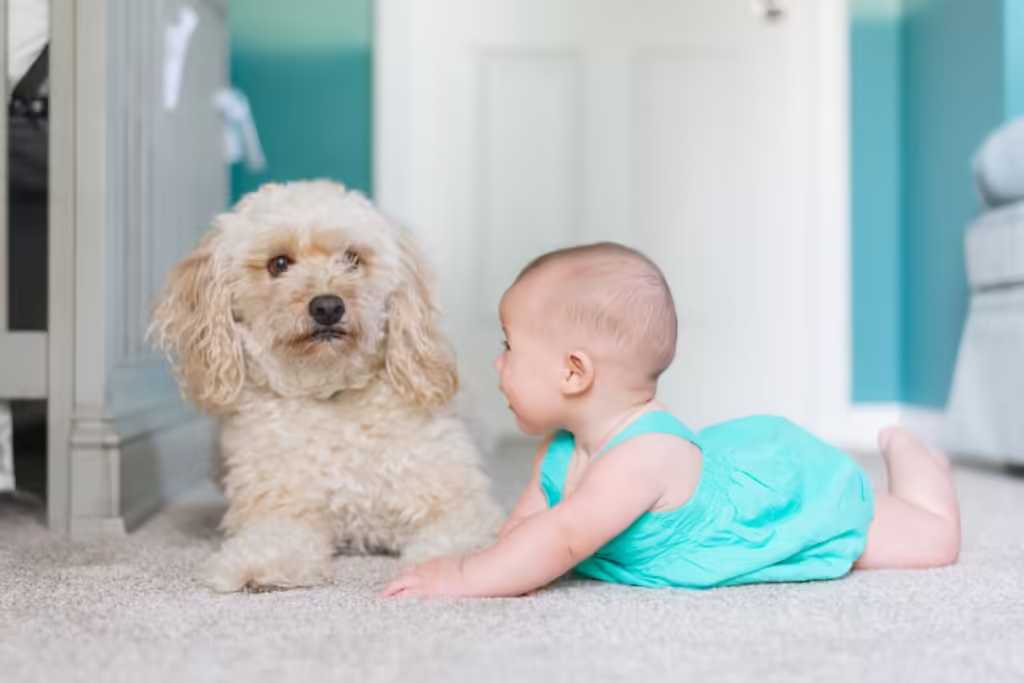
Are Schnoodles Easy To Train?
Yes, Schnoodles are considered one of the more easy to train dog breeds thanks to their outstanding intelligence and desire to please their owners. With patience and positive reinforcement training methods like treats and praise, Schnoodles excel at obedience, agility, and trick training from an early age.
Their eager-to-please natures combined with their quick thinking and ability to focus make training sessions both fun and productive for Schnoodles. Early socialization is important, but their attentiveness helps the lessons stick.
How much exercise does a Schnoodle need?
Schnoodles are active and energetic dogs that require moderate to high levels of exercise. Daily walks, playtime in a securely fenced yard or dog park, and interactive games like fetch or tug-of-war are essential for keeping your Schnoodle physically and mentally stimulated. The exact exercise requirements can vary based on the individual dog’s size, age, and energy level, but most Schnoodles benefit from at least 30 minutes to an hour of exercise per day.
Do Schnoodles bark a lot?
While no dog breed is completely silent, Schnoodles are generally not considered excessive barkers. However, their barking tendencies can vary depending on individual temperament and training. Proper socialization and teaching your Schnoodle when it’s appropriate to bark or remain quiet can help manage their vocalizations.
Are Schnoodles good apartment dogs?
Schnoodles can make great apartment dogs, especially the smaller Toy and Miniature varieties. They are adaptable to various living situations, provided their exercise and mental stimulation needs are met through daily walks, playtime, and interactive toys. However, it’s important to consider your lifestyle and commitment to meeting their needs before getting a Schnoodle for apartment living.
Are Schnoodles High Energy?
Schnoodles are what you’d call a moderate to high energy breed – so they do require a fair amount of daily exercise and activity to stay happy and healthy. Their terrier heritage gives them a lively, spunky spirit that loves to play, run, and stay busy.
A brisk 30-60 minute walk plus some playtime and mental stimulation should sufficiently meet a Schnoodle’s exercise needs. But they also know how to settle down at home after getting their activity quota. Providing enough exercise is key to avoiding boredom-induced naughtiness.
Are Schnoodles Protective?
While Schnoodles are not inherently guard dogs by nature, they can form very protective bonds with their families – especially with proper training. Their bravery, confidence, and high intelligence give them a natural inclination to watch over their pack.
Schnoodles make wonderfully vigilant watchdogs, quickly alerting you to anything out of the ordinary with their inherent territorial barking tendencies. With socialization, they can learn to distinguish real threats from friends.
Are Schnoodles Easy To Potty Train?
With patience and consistent crate/house training routines, most Schnoodles can be effectively potty trained by 4-6 months of age. Their impressive intelligence helps them pick up on cues more quickly than many other breeds.
Using positive reinforcement by rewarding them for going potty outside, combined with crating when unsupervised, is usually the most effective housebreaking method for these smart pups. Staying on top of a routine is key.
Can Schnoodles Be Left Alone?
Like most companion breeds, Schnoodles do not do well if left alone for excessive periods due to their human-oriented natures. However, they can typically handle being left for 4-6 hours once fully grown if properly crate-trained and exercised beforehand.
Puppies require much more frequent potty breaks and supervision. Leaving adult Schnoodles alone for too long can lead to destructive behaviors like chewing, digging, or barking due to separation anxiety. Providing mentally stimulating toys helps.
Can Schnoodles Swim?
Yes, Schnoodles usually take very well to swimming once properly introduced! With their Poodle parent’s water-retrieving history and the Schnauzer’s spirited nature, most Schnoodles love paddling around and would make great swimming companions.
Of course, taking precautions like using doggy life jackets and not leaving them unattended is important, especially for young puppies. But their hypoallergenic coats and athletic builds make Schnoodles excellent swimmers.
Can Schnoodles Live With Cats?
With proper and early socialization, Schnoodles generally do very well living in homes with cats and other pets. Their fun, friendly temperaments and prey drive (being half terrier) are usually not an issue when introduced correctly.
It’s best to raise Schnoodle puppies from an early age around cats so they become accustomed and view them as part of their household “pack.” With supervision, they often become best friends! Cats may need vertical spaces to get away.
Can Schnoodles Run?
Yes, Schnoodles were bred from athletic sporting and terrier breeds, so they have the energy and endurance for running! In moderation of course – too much forced running could potentially cause joint issues in some individuals.
Most Schnoodles absolutely love going for runs or hikes with their owners to expend energy. Their muscular builds make them agile runners that can keep up for shorter outings like 5Ks. Just avoid overdoing it, especially in hot weather.
Can Schnoodles Have Blue Eyes?
While brown is the most common eye color seen in Schnoodles, the striking blue eye trait can potentially occur as well if inherited from their parent breeds.
Blue eyes in Schnoodles result from a lack of pigmentation. They take after the Poodle side, which can produce a blue eye gene. Or they may have one blue eye and one brown – known as “heterochromia.”
These beautiful blue or bi-colored eyes contrast stunningly with a dark schnoodle coat color, making them highly prized by some owners.
Can Schnoodles Eat Peanut Butter?
In moderation, yes – peanut butter can make a wonderful treat for Schnoodles! A small amount of unsalted, unsweetened peanut butter provides a protein boost. It’s also great for hiding pills or using during training sessions.
However, consuming too much peanut butter can lead to pancreatitis, obesity, and other issues in dogs. As with any treat, it should make up no more than 10% of a Schnoodle’s caloric intake. Never feed them peanut butter containing xylitol.
Are Schnoodles good dogs?
Absolutely! Schnoodles are fantastic dogs for the right home. These lively, affectioned dogs are bred from the perfect pairs – the lively Schnauzer and gentle poodle. Schnoodles are quick-wits with big hearts, always up for a good game or snuggle. With the cunning of the Schnauzer and the charming Poodle, it’s no wonder their parents are winning over dog lovers’ hearts everywhere. A Schnodler’s love of life is intoxicating, and if you’re up for the adventure, this sweet, energetic pooch will dog-nup your home with unstoppable joy.
Can Schnoodles Swim?
You bet these adventurous pups can swim! With their Poodle parent’s retriever roots and the Schnauzer’s spirited athleticism, Schnoodles take to the water like ducks to a pond. Their hypoallergenic coat dries quickly after a delightful paddle, and their sturdy build allows them to be strong swimmers from an early age with some guidance. Just introduce the water slowly, give them a doggy lifejacket for safety, and watch as your Schnoodle turns into an amphibious explorer! Whether at the beach, lake, or backyard pool, Schnoodles lovemaking a splash.
Can Schnoodles Be Left Alone?
Like any companion breed, Schnoodles do best when not left alone for excessive stretches. Their human-centric personalities crave interaction, company, and activity. However, a properly exercised and crate-trained adult Schnoodle can typically do okay alone for 4-6 hours while you’re at work.
Any longer and you may come home to clothes strewn about, chewed up furniture, or puddles on the floor thanks to separation anxiety setting in! Puppies require even more frequent supervision. Providing mentally-stimulating puzzle toys can help, but these pooches do best with a family member around as much as possible.
Can Schnoodles Be AKC Registered?
Since the Schnoodle is a relatively new hybrid or “designer” breed, it is not currently recognized by the American Kennel Club. However, reputable breeders can and do register Schnoodle litters with other canine organizations like:
Having registration paperwork documenting your Schnoodle’s pedigree can be useful for travel, competitions, and more. It verifies your pup’s Schnauzer and Poodle lineage. But ultimately, a dog’s companionship matters more than papers!
Can Schnoodles Live With Cats?
With their generally friendly, curious natures, Schnoodles can make wonderful companions in homes with cats and other pets – with the proper introductions and training, that is! The key is socializing them from a young puppyhood age to accept cats as part of their family “pack.”
Supervision is still required, especially early on, as Schnoodles may be tempted to chase kitty friends thanks to their terrier heritage. But once accustomed, they often become best buddies who love cuddling up together. The cat just needs vertical spaces to get away when desired.
Can Schnoodles Run?
These athletic dynamos were bred for an active lifestyle, so running is definitely in a Schnoodle’s wheelhouse! With their muscular builds, agility, and high energy levels, most Schnoodles enthusiastically love hitting the trail, beach, or even backyard for a brisk daily run alongside their owners.
Of course, preventing injury by not overdoing it on the mileage, especially at a young age, is important. But regularly running at a moderate pace provides excellent exercise that helps keep both mind and body fit for these lively pups.
Can Schnoodles Have Blue Eyes?
While brown is the most common eye color, Schnoodles can potentially inherit the striking blue-eyed trait from their parent breeds too! Blue eyes in dogs result from a lack of pigment, and both Schnauzers and Poodles sometimes produce pups with those captivating azure peepers.
Some Schnoodles may even end up with one blue eye and one brown eye in a condition called “heterochromia.” These unique bi-colored eyes give the pup an especially distinctive, almost mythical look when paired with a dark or parti-colored coat.
While not the norm, these gorgeous blue or blue/brown eyed Schnoodles are highly coveted by some fanciers for their striking gaze!
What Can Schnoodles Eat?
With their moderately-sized schnauzer/poodle frames, Schnoodles do best on a high-quality dry dog food formulated for their specific life stage – puppy, adult, or senior. These provide complete, balanced nutrition.
In addition, Schnoodles can enjoy:
- Lean proteins like chicken, salmon, or eggs
- Dog-safe fruits and veggies like carrots, apples, green beans
- Limited healthy treats like plain yogurt
- Plenty of fresh water
Avoid toxic human foods like chocolate, xylitol, grapes/raisins, onions, and excessive salt or fat which can make them sick. Simple, whole food toppers are great for adding variety and interest to their diet.
What Do Schnoodles Look Like?
These adorable teddy-bear dogs really run the gamut in their possible looks and sizes! A Schnoodle’s appearance depends on whether their Poodle or Schnauzer genetics are more dominant in any given litter.
They can have the classic Schnauzer beard and mustache, or the more clean-shaven Poodle muzzle. Their coats may be wiry or tight curls in colors like black, grey, brown, parti (multi-color), or even striking blue!
Size-wise, they generally stand 12-20″ and weigh 15-45 lbs. Their distinctive natural “teddy bear” look remains, making them impossibly cute! Proper grooming brings out their full shaggypotential.
What Do Schnoodle Puppies Look Like?
Could anything be more precious than a tiny Schnoodle puppy? These extra-furry little munchkins look like real-life teddy bears brought to cuddly life! Their soft, fuzzy puppy coats may appear more Poodle-like with tight curls before developing their iconic Schnauzer beards and eyebrows.
With their big, innocent puppy eyes, cute colors like black/white, and hilarious antics as they bounce around, Schnoodle puppies are virtually irresistible. They invite endless snuggles and playtime from the moment you meet them as heart-meltingly adorable little puffballs of energy.
Of course, that precious puppy fur requires special grooming to prevent matting as they grow into young adults. But that first blissful phase is pure teddy bear cuteness!
What Do Schnoodles Need?
Like any dog, Schnoodles need certain core things to be happy, healthy companions:
🏡 A Safe, Secure Home Environment – With proper training, exercise, and positive reinforcement. Schnoodles thrive on routines.
🥛 High-Quality Food & Water – A nutritious diet formulated for their breed size and life stage, plus plenty of fresh water.
💇 Regular Grooming – Their hypoallergenic coats need brushing 1-2 times per week and professional grooming every 6-8 weeks.
🚶 Daily Exercise & Playtime – These active pups need 30-60 minutes of walking/running plus interactive games to expend energy.
❤️ Affection & Companionship – As people-oriented lapdogs, they crave quality time with their families.
🧠 Mental Stimulation – Puzzle toys, obedience training, and new experiences engage their sharp minds.
With their moderate size, energy levels, and grooming needs, Schnoodles make great companions for active owners with time to meet their demands for exercise and attention.
How Long Do Schnoodles Live?
One of the advantages of being a hybrid breed is hybrid vigor – and Schnoodles typically benefit from a longer-than-average life expectancy as a result. Most healthy Schnoodles enjoy a lifespan of 12-15 years when provided with proper care.
Of course, genetics, diet, exercise, veterinary care, and environmental factors can all influence a Schnoodle’s longevity. But in general, you can expect to have over a decade of fuzzy companionship with one of these adorable pups by your side!
Providing recommended preventative care like annual check-ups, proper grooming, and a healthy lifestyle helps maximize a Schnoodle’s years.
How Big Do Schnoodles Get?
As a hybrid crossbreed that combines different sized parent breeds, there is some variance in how big Schnoodles get at maturity. But here are the typical size ranges:
Height: 12-20 inches tall at the shoulder
Weight: 15-45 lbs
The smallest Schnoodles (with a Toy/Miniature Poodle parent) may only reach about 12″ and 15 lbs. While on the larger end, Schnoodles bred from Standard Schnauzers and Standard Poodles can potentially hit 20″ and 45 lbs.
Of course, gender plays a role too, with males tending towards the higher end of the scale. But in general, Schnoodles fall into that compact, portable medium-sized range that makes them so appealing!
How Much Do Schnoodles Cost?
Well-bred Schnoodle puppies from reputable breeders generally cost $1,000-$3,000 on average. There are a few factors that influence their pricing:
- Breeder Excellence & Reputation
- Parental Health/Genetic Testing
- Breed Popularity/Demand
- Size of Litter
- Grooming Requirements
- Age of Puppy
Adoption from a Schnoodle-specific rescue is also an option, with fees usually ranging from $300-$500. While initially more expensive upfront, a quality breeder provides health guarantees and should be considered an investment.
Either way, new Schnoodle owners should also budget for supplies, training, grooming, veterinary care, and more. But these hypoallergenic pooches are worth it!
How Old Do Schnoodles Live?
These lively hybrid dogs tend to be pretty long-lived pups! Thanks to the benefits of hybrid vigor, most healthy Schnoodles enjoy a lifespan of 12-15 years on average.
With excellent care from their owners, it’s not uncommon for some Schnoodles to make it well into their mid-teens. Providing a nutritious diet, ample exercise, grooming, veterinary checkups, and a loving home all help maximize their longevity.
Of course, a number of factors like genetics, size, and environmental conditions can influence any individual Schnoodle’s lifespan. But in general, you can expect over a decade of adventurous companionship from these fun-loving furballs!
How Often Should Schnoodles Be Groomed?
With their tight, hypoallergenic coats, Schnoodles do require fairly frequent grooming to keep them looking and feeling their best. Here are some typical grooming needs:
At Home:
- Brush 1-2 times per week to prevent matting
- Bathe every 4-6 weeks (more if needed)
- Trim nails every 2-4 weeks
- Clean ears weekly
- Brush teeth regularly
Professional Grooming:
- Full grooming every 6-8 weeks
- Includes bathing, trimming, shaping the coat
- Popular looks are the “teddy bear” cut or a puppy clip
Keeping up with brushing is especially important for these low-shedding pups. But their easy-care coats are well worth a bit of grooming effort for most owners!
How Much Should Schnoodles Eat?
A Schnoodle’s dietary needs depend on their specific size, activity level, metabolism, and life stage. But in general, here are some feeding guidelines:
Puppies (0-12 months):
- Free-feed puppy food 3-4 times per day
- About 1/2 – 1 cup per feeding
Adults:
- 1 – 1.5 cups of food per day, split into two meals
- Feed a high-quality dry dog food for their size
Senior Dogs:
- Feed less than adult portions to prevent weight gain
- May need lower-calorie or low-fat senior dog food
Snacks and treats should make up no more than 10% of their total calorie intake. And of course, providing constant access to fresh, clean water is essential. Consulting your vet is wise for your Schnoodle’s ideal weight and portions.
How Often Should I Bathe My Schnoodle?
Schnoodles don’t need to be bathed excessively, unlike some other breeds. Their hypoallergenic coats actually help them stay cleaner for longer periods of time.
In general, a bath every 4-6 weeks or so is sufficient for most adult Schnoodles. However, some factors that may require more frequent bathing include:
- Rolling in or tracking in dirt/mud
- Excessive seasonal shedding
- A particularly pungent “doggy odor”
- Skin conditions like allergies
For puppies under 6 months, it’s best to stick to every 6-8 weeks unless they get especially smelly or dirty.
Be sure to use a mild, dog-safe shampoo and conditioner. Over-bathing can strip their coats of essential oils. But don’t let your Schnoodle go too long without a good cleaning either!
How To Groom A Schnoodle At Home?
While professional grooming every 6-8 weeks is recommended, Schnoodles also need some routine home grooming to keep them looking and feeling their best. Here are some tips:
Brushing:
- Brush 1-2 times per week with a slicker brush to prevent matting
- Use a metal comb to fully work out any tangled areas
- Brushing removes loose hair and redistributes skin oils
Bathing:
- Bathe every 4-6 weeks with a mild, dog-safe shampoo
- Brush thoroughly before bathing to remove loose hair
- Be sure to fully rinse out all shampoo residue
Ear Cleaning:
- Check and wipe out ears weekly with cotton balls and ear cleaner
- Don’t insert anything into the ear canal
Nail Trimming:
- Use dog nail trimmers every 2-4 weeks
- Only trim the hooked part, not into the quick
Dental Care:
- Brush teeth 2-3 times per week with dog toothpaste
- Give approved dental chews/treats
With the right tools and techniques, home grooming between professional visits can be bonding time with your Schnoodle!
Schnoodle Meaning
The name “Schnoodle” is simply a fun, pun-like combination of the two parent breeds that create this hybrid dogs:
Schnauzer + Poodle = Schnoodle
While not the most elegant name, it does accurately convey the Schnoodle’s signature physical traits – the facial furnishings and beard reminiscent of a Schnauzer, combined with the iconic curly or wavy Poodle coat.
Some breeders use alternative names like “Schnauzerpoo” or “Schnoozer” but ultimately they all refer to the adorable, teddy bear-like cross between these two distinct purebreds.
Schnoodle What’s Good About ‘Em
There’s a lot to love about these fuzzy, fun-loving hybrid pups! A few of the biggest draws of the Schnoodle breed include:
✨ Hypoallergenic, Low-Shedding Coats – Their Poodle parentage means less dander and dog hair around the home.
🧸 Adorably Teddy Bear Looks – With their rounded teddy bear faces, floppy ears, and shaggy curls, Schnoodles ooze cuddly cuteness!
👓 Extreme Intelligence – This clever crossbreed inherits the smarts and eagerness to please from both parents.
🤺 Active, Playful Personalities – Schnoodles have an upbeat zest for life and enjoy games, tricks, and activities.
💗 Affectionate Companions – With their loving, devoted natures, Schnoodles make wonderful lifelong furry friends.
Their unique blend of brains, beauty, and unwavering bonds with their families make Schnoodles such appealing companions!

